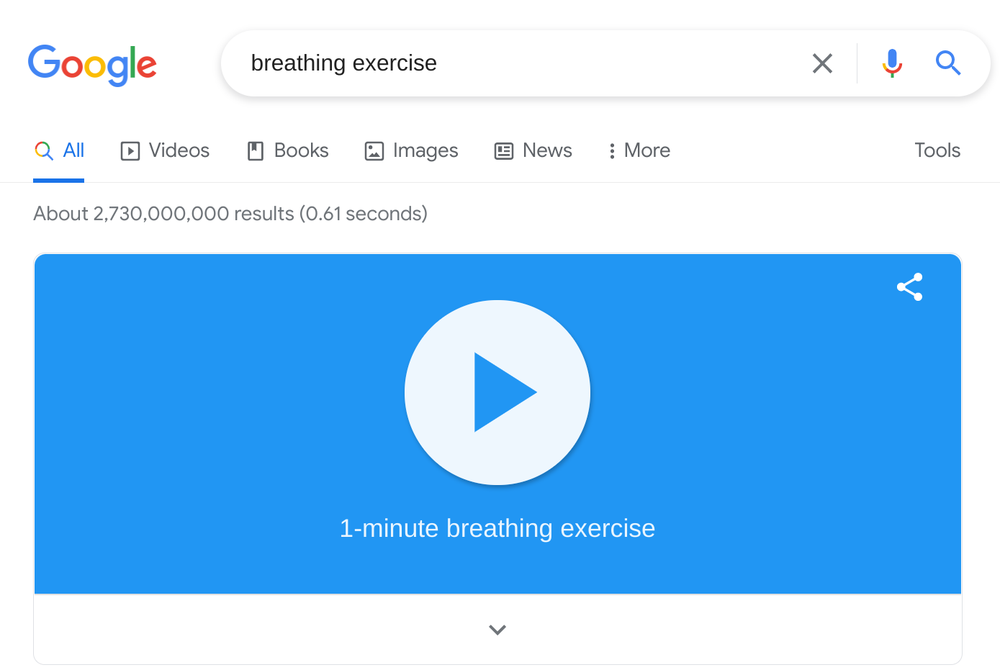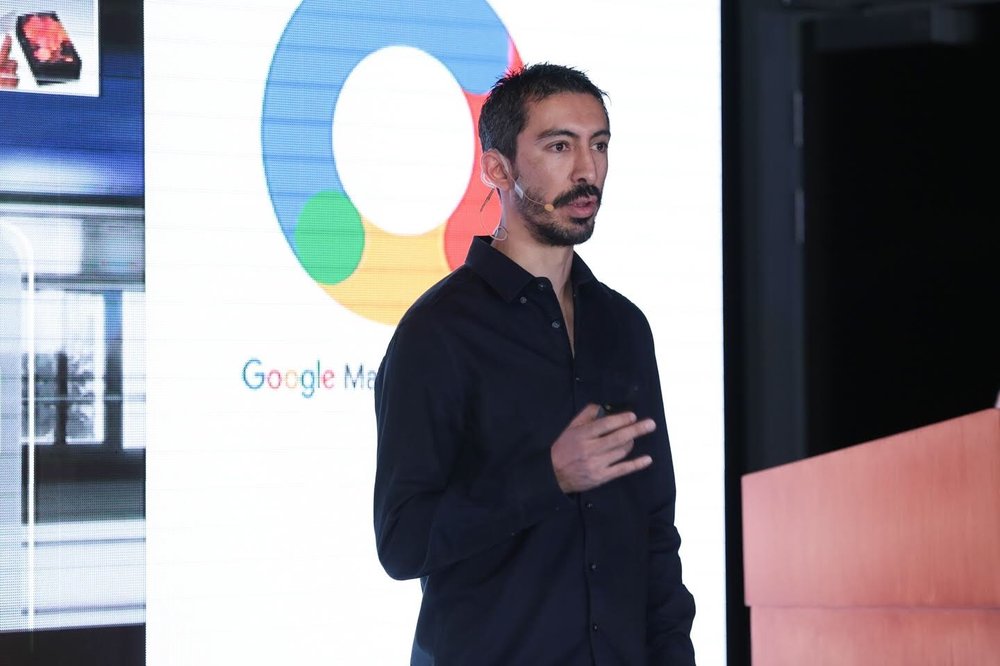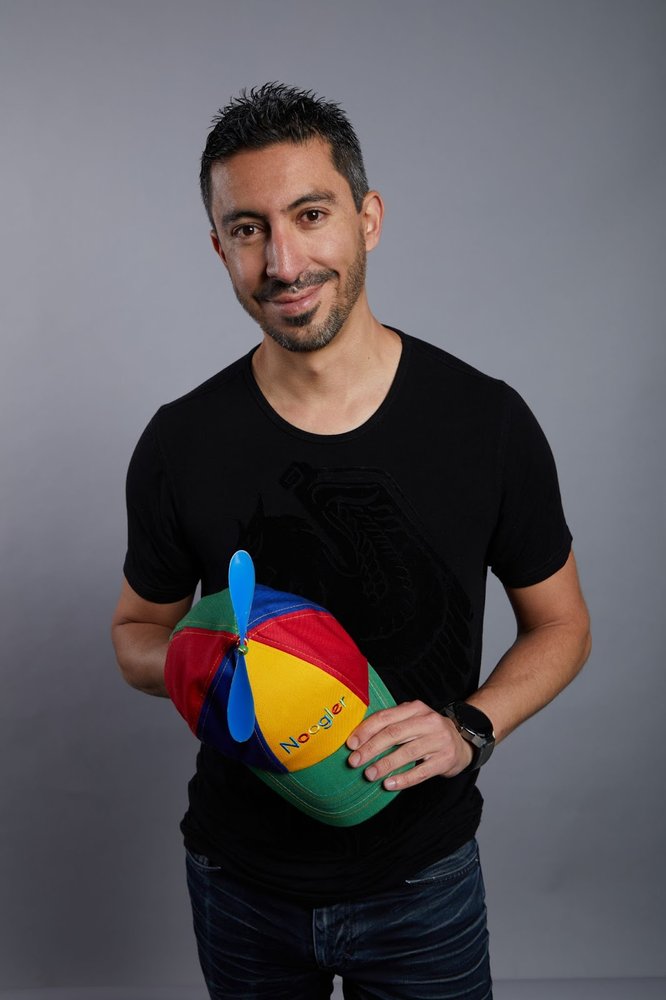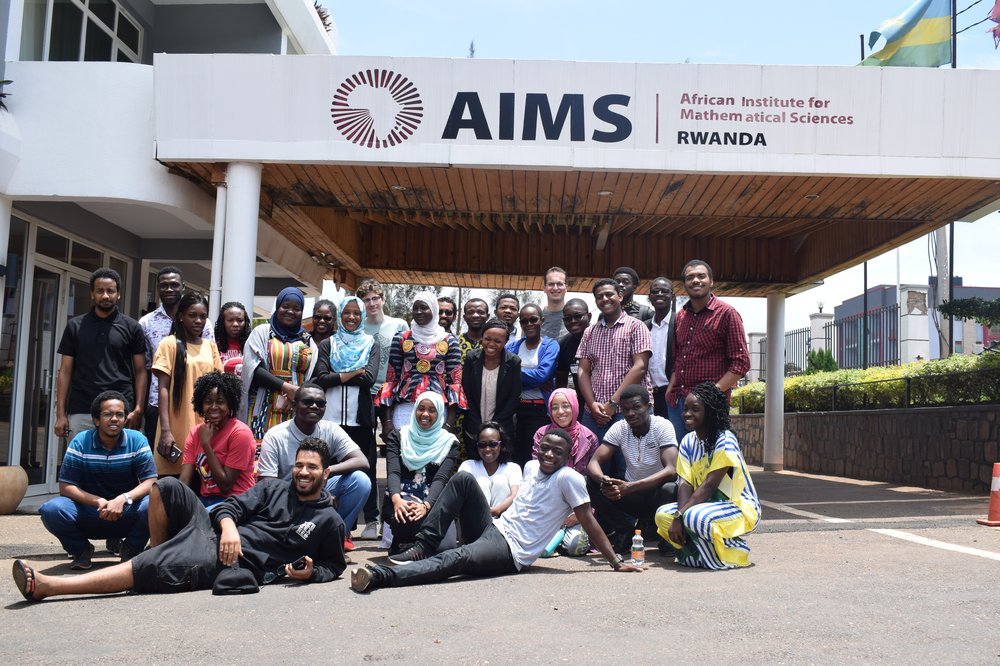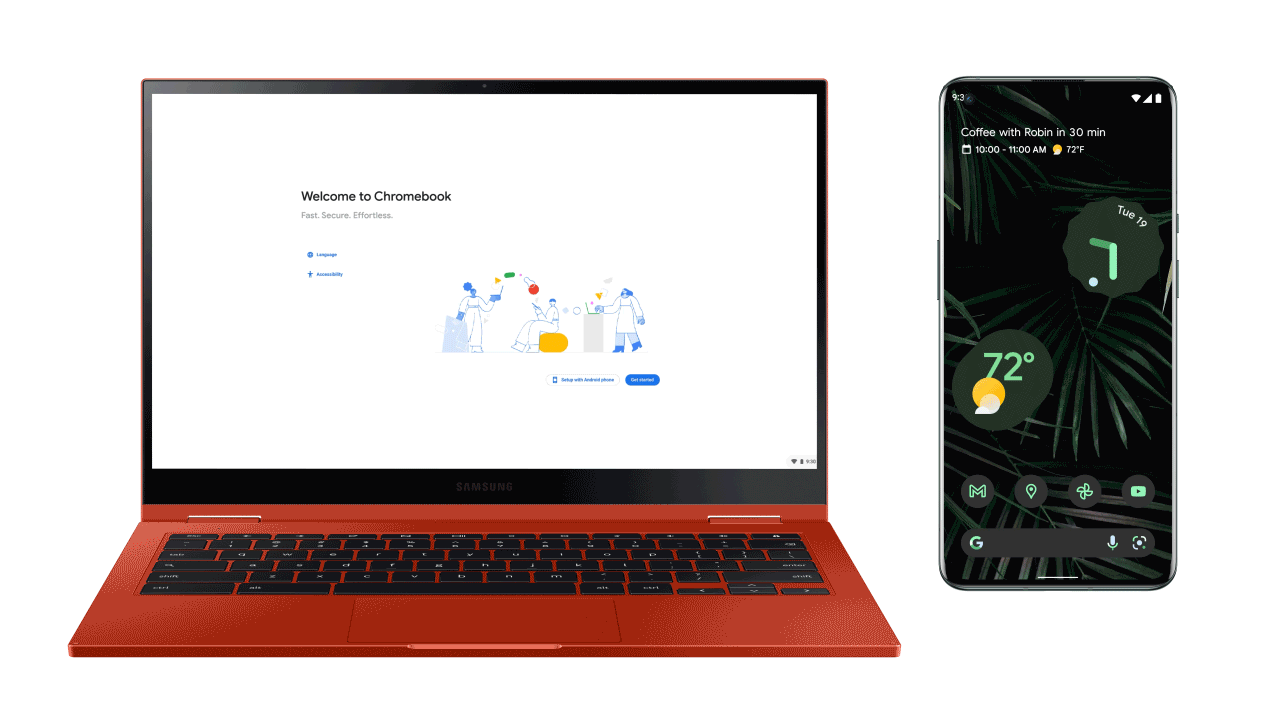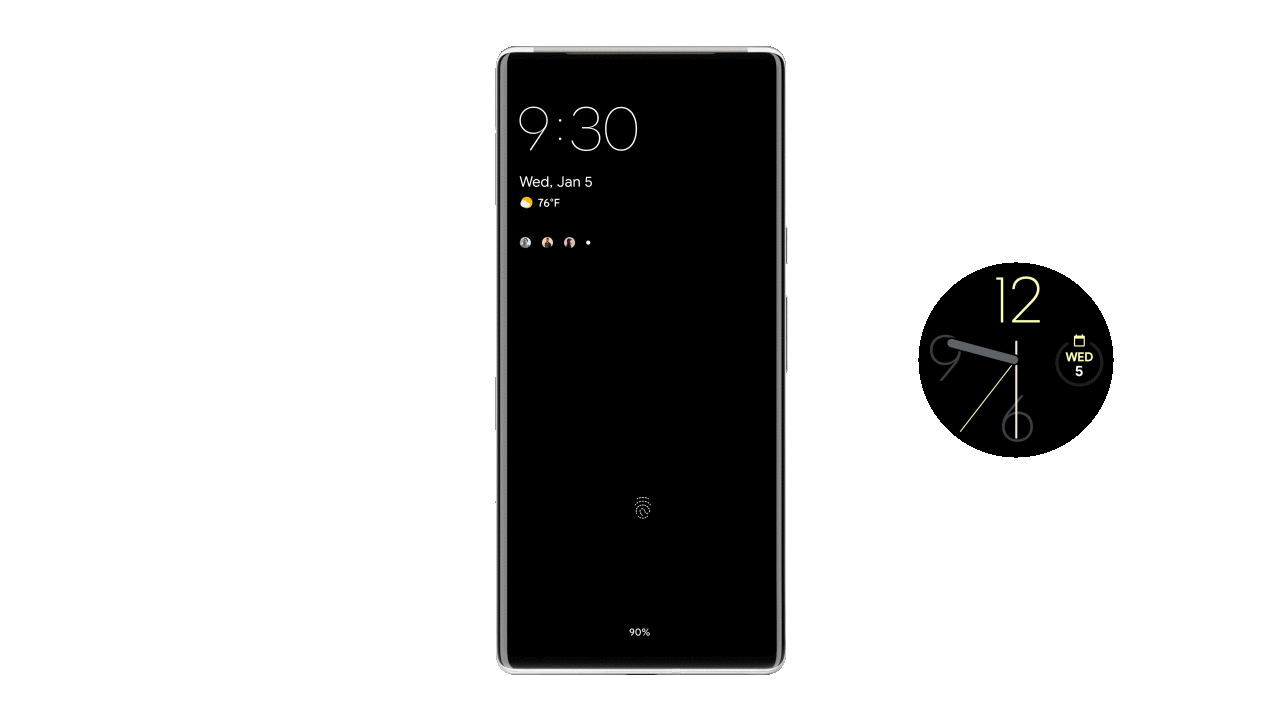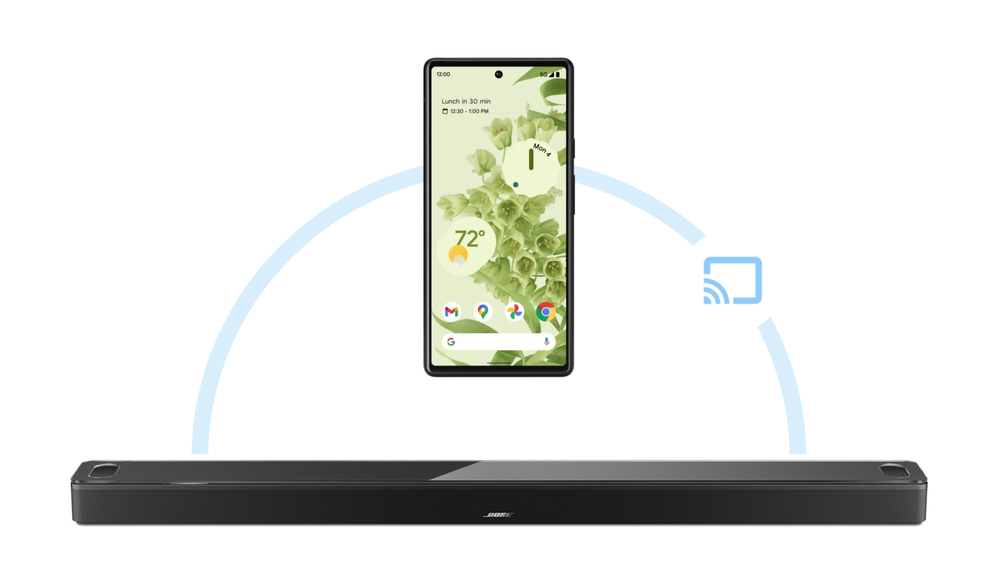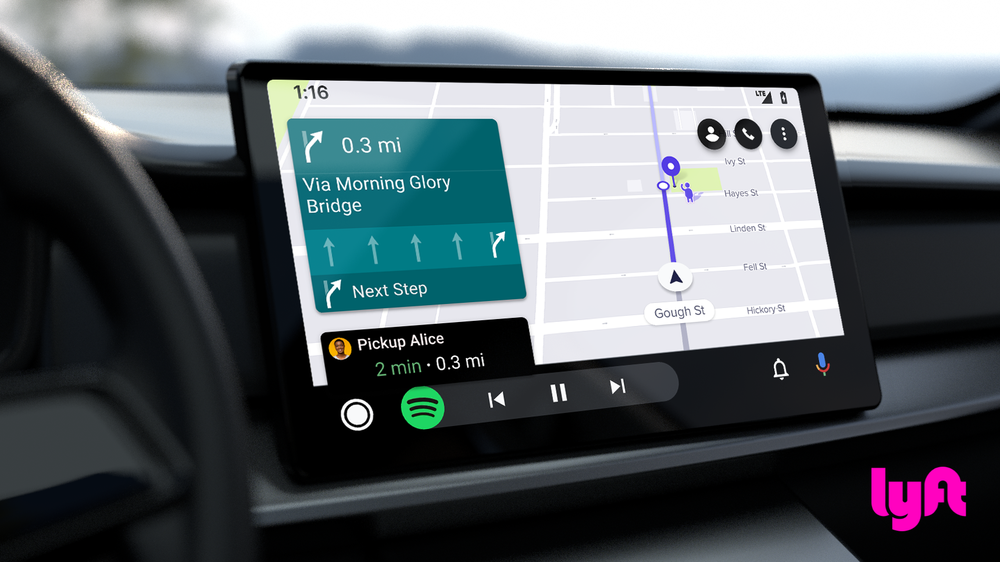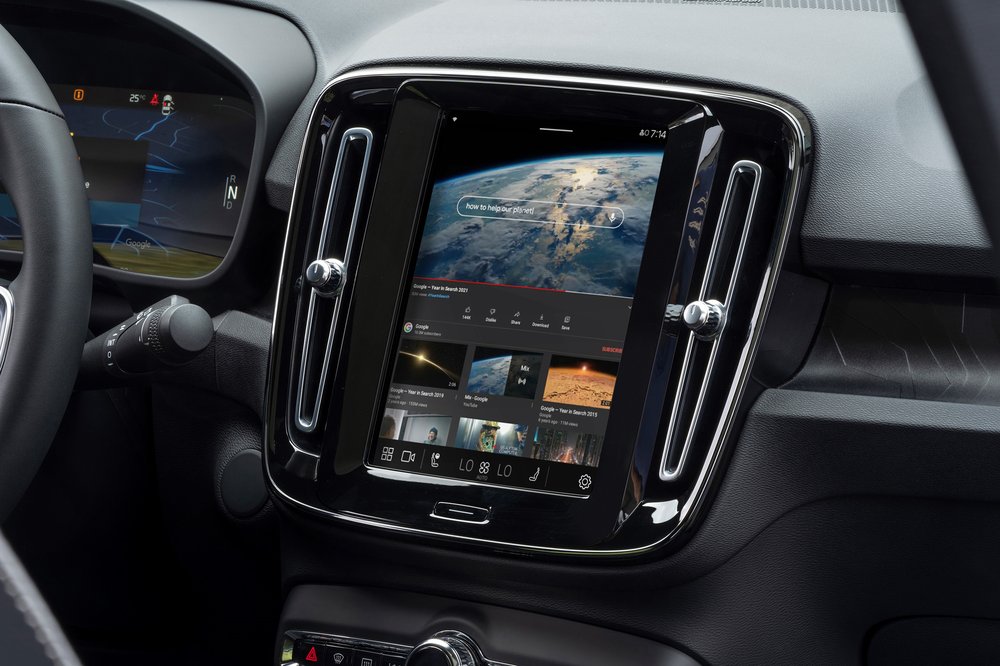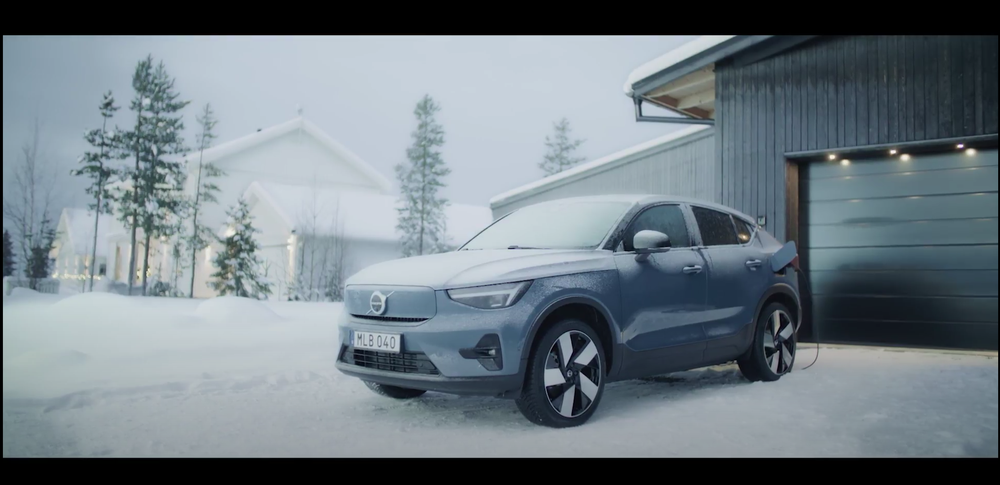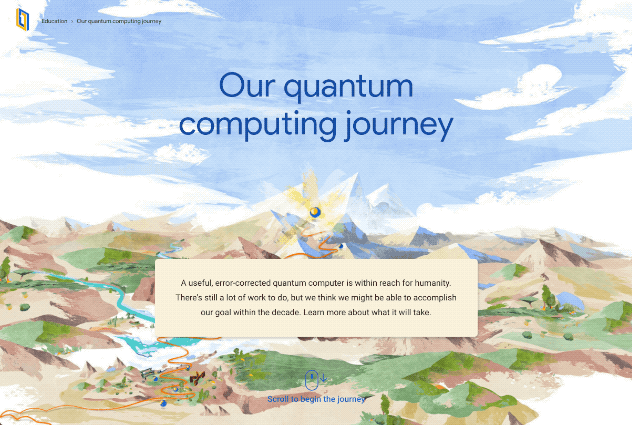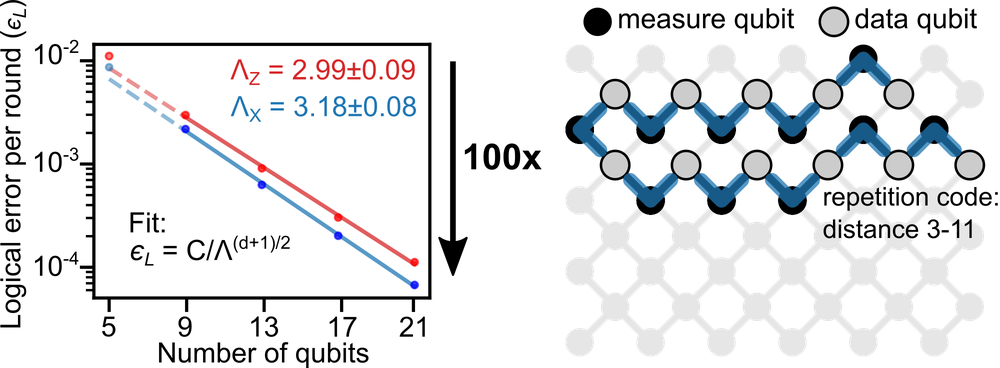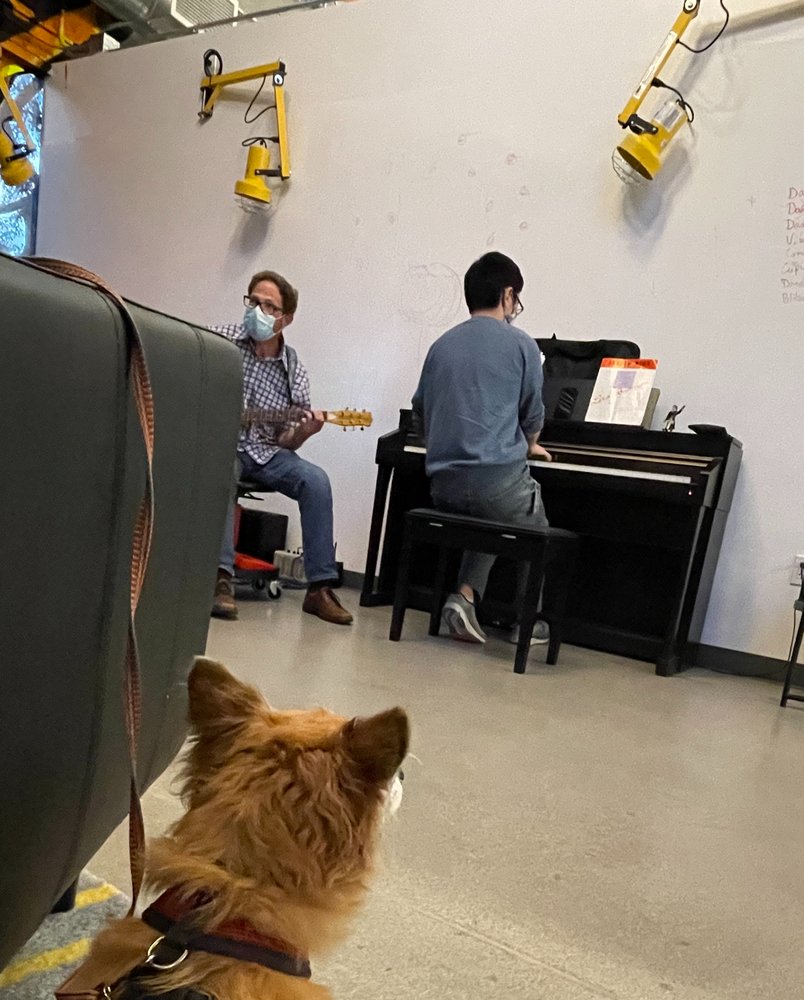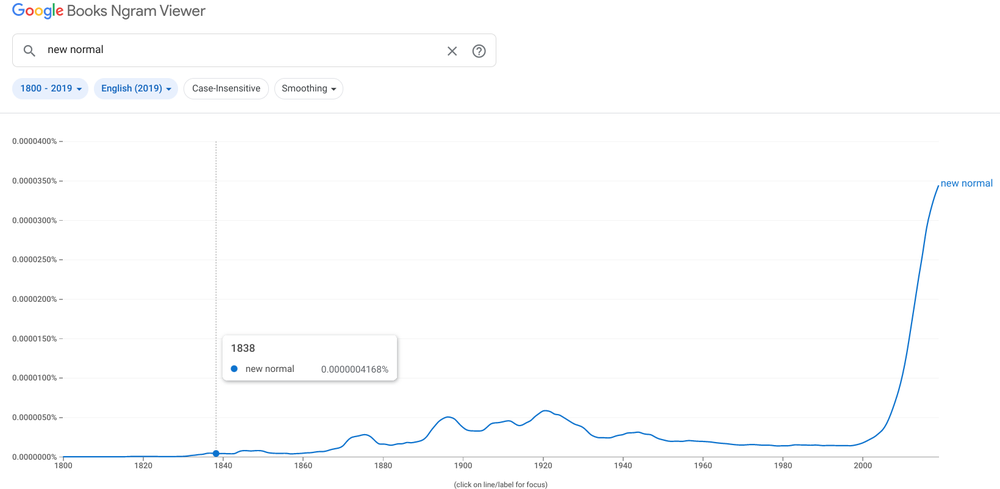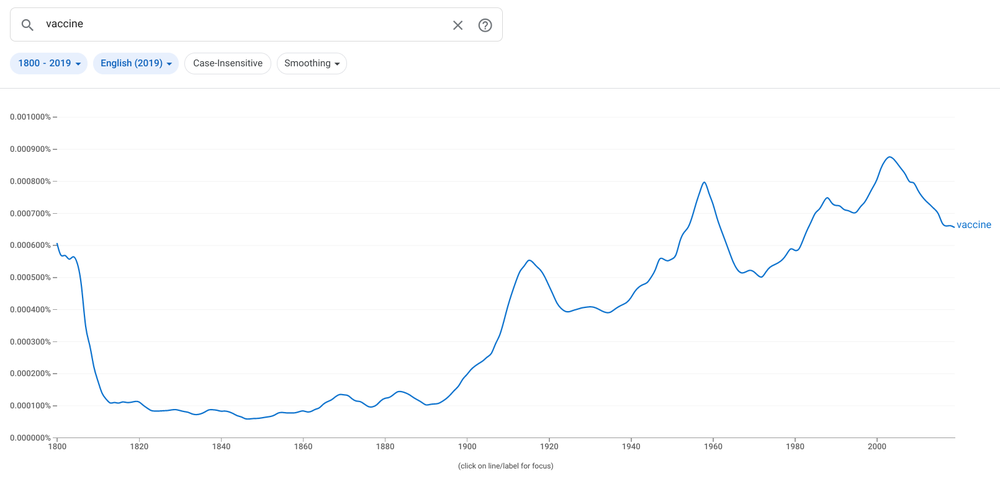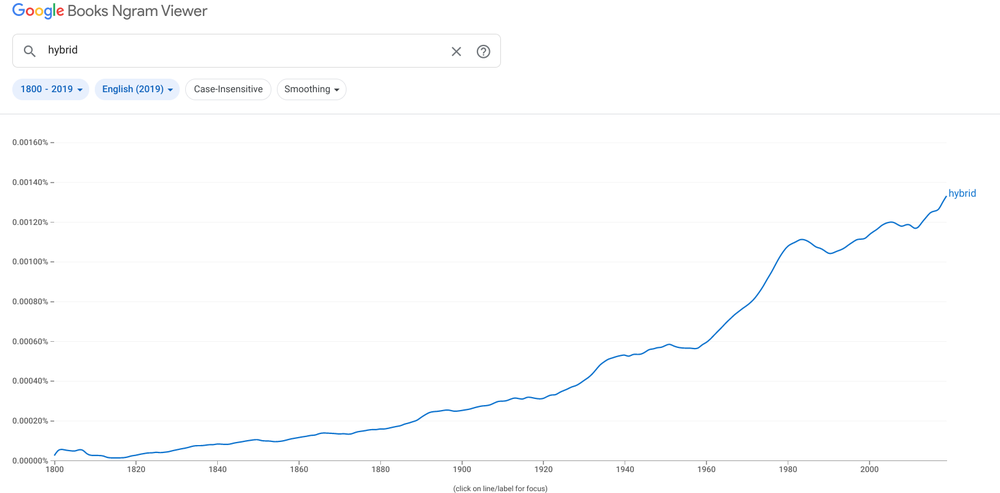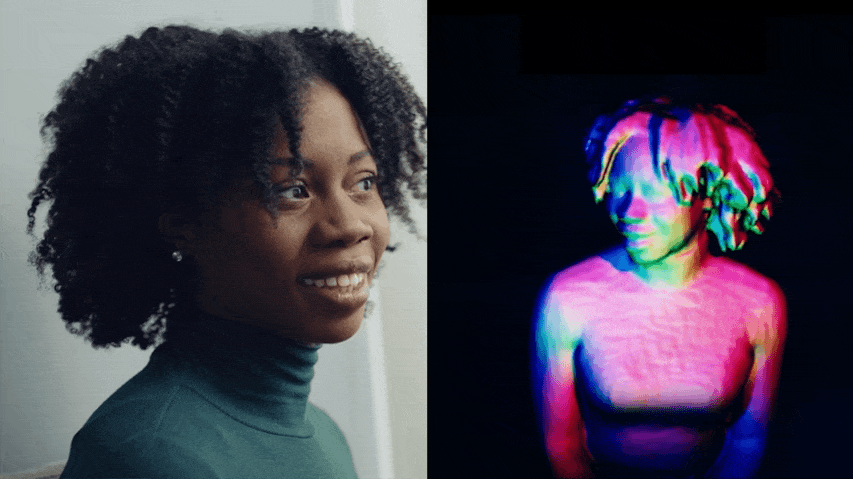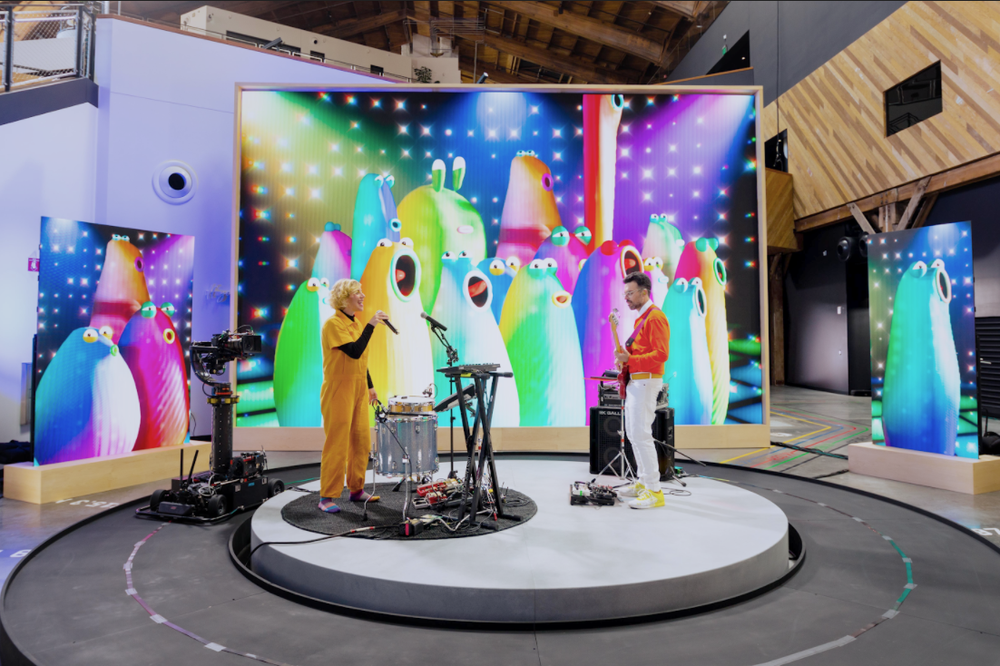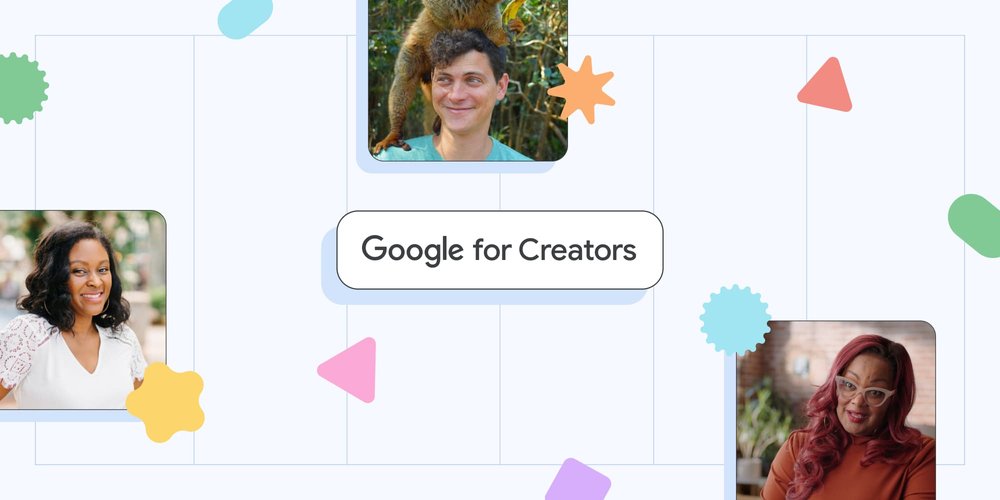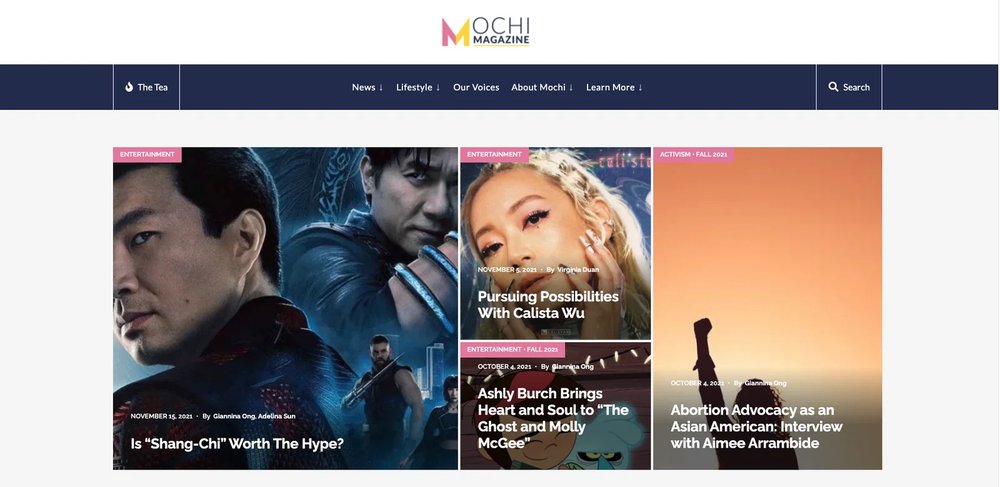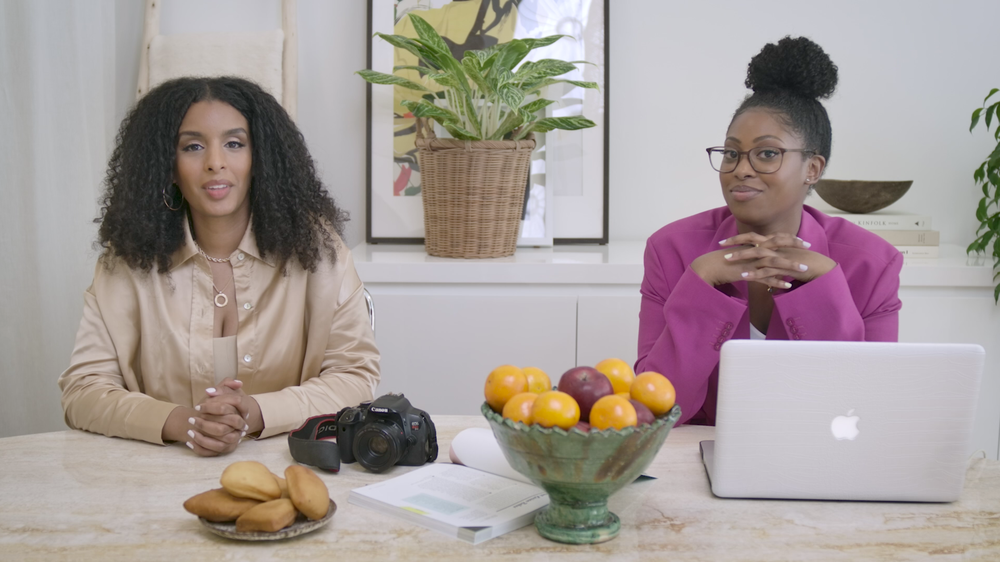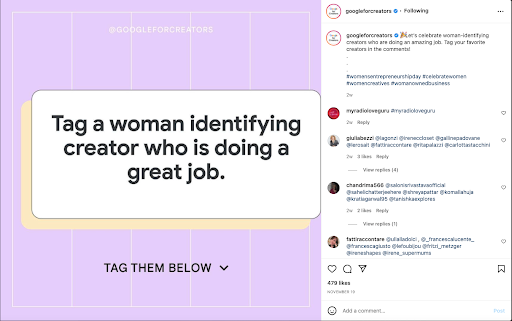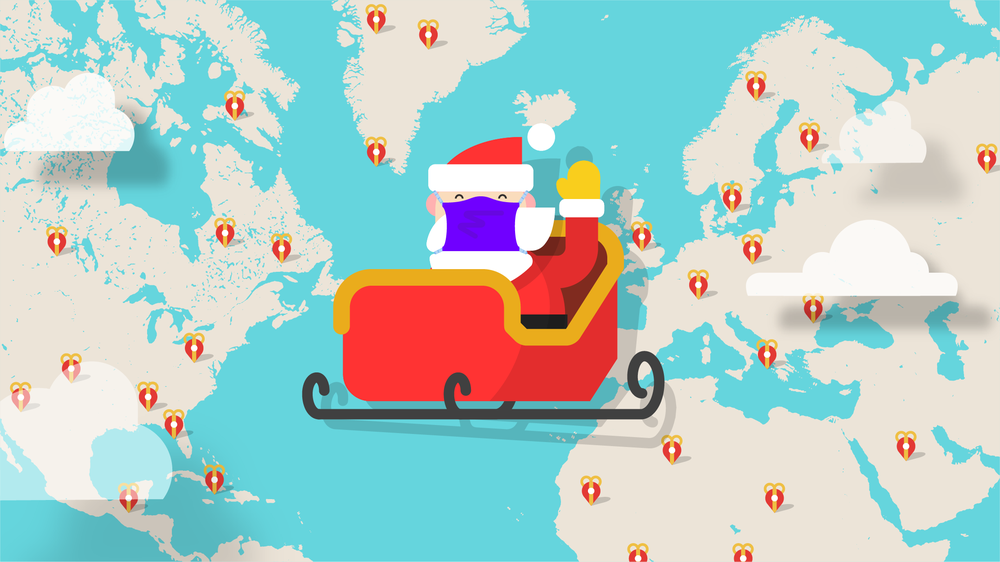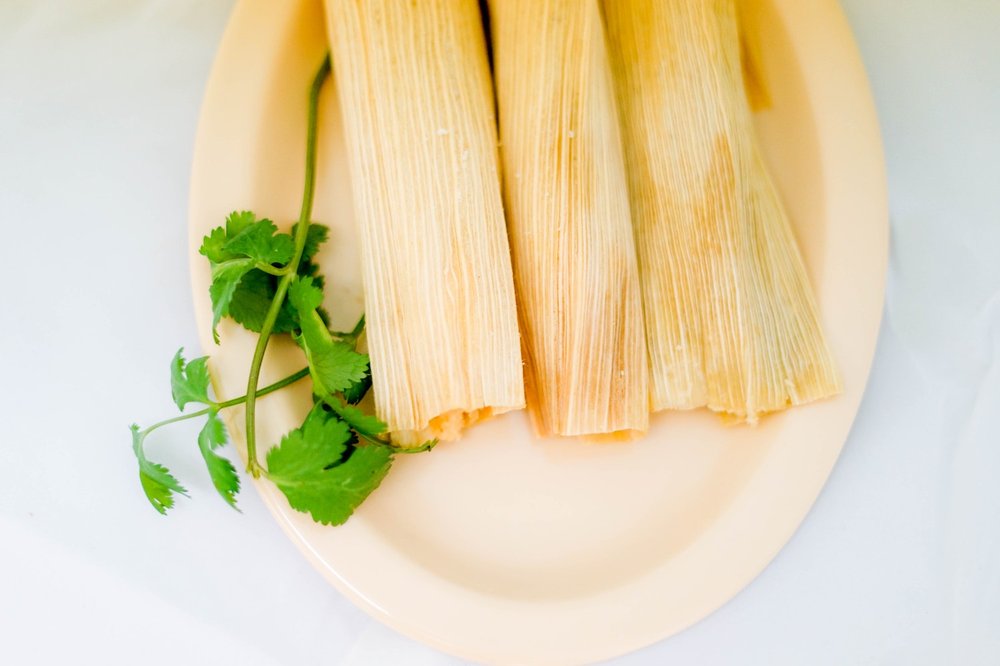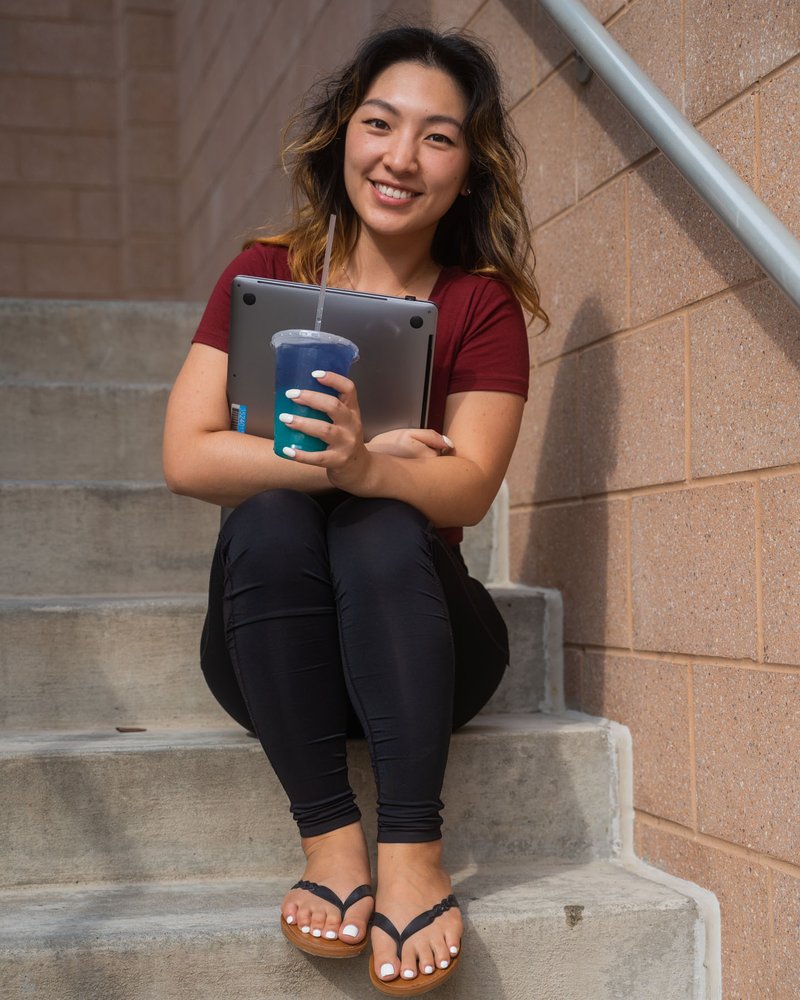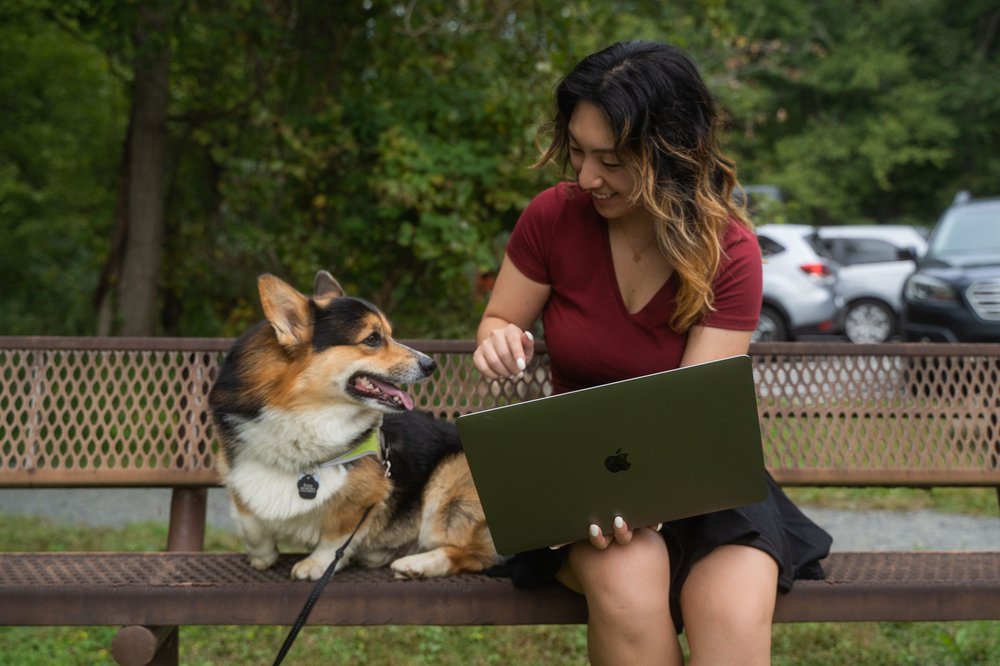This XML file does not appear to have any style information associated with it. The document tree is shown below.
<rss xmlns:atom="http://www.w3.org/2005/Atom" xmlns:content="http://purl.org/rss/1.0/modules/content/" xmlns:dc="http://purl.org/dc/elements/1.1/" xmlns:media="http://search.yahoo.com/mrss/" version="2.0">
<title>The Keyword</title>
https://blog.google/
The Keyword
atom:link href="https://blog.google/rss/" rel="self"/
en-us
Thu, 06 Jan 2022 19:00:00 +0000
![]()
https://blog.google/static/blogv2/images/google.png
<title>The Keyword</title>
https://blog.google/
<title>How live streaming helps this creator connect with fans</title>
https://blog.google/google-for-creators/how-live-streaming-helps-creator-connect-fans/
Tokes Ojo-Ade is a marketing professional, wife, mother — and successful web creator. Her blog,Tokes’ Take On Style, offers fashion, styling and shopping tips for busy working women.
“As a working mom, I know we all juggle a lot,” says Tokes, who lives in the Washington, D.C. area and works full time in the financial services industry. “Given how time-strapped a lot of us are, we could all use effortless styling and shopping tips along with easy style inspiration,” she says.
Fashion, style and beauty influencer Tokes blogs for busy, working women.
Tokes works to keep her blog’s content fresh and engaging, like adding tappableWeb Stories andYouTube videos to the mix.
She also live streams to connect with her fan base more directly. On her biweekly Instagram TV (IGTV) live stream, “Thursday Tips with Tokes,” she shares quick and easy styling tips with her audience — sometimes reaching over 21,000 views. Fans are drawn to Tokes’ warm, personal style, and her take on fashion and beauty to help women feel more confident.
Tokes spoke with us to share a few tips on how to create a successful live stream.
Through her blog, videos and live stream shows, Tokes helps women find style on a budget.
Prepare before you go live
While trial and error is part of the learning process, Tokes says preparation is key to live streaming success. “You have to figure out what the intent is, what the goal is, what you're trying to do,” Tokes says. “If I'm sharing tips, do I need props? If I'm showing and telling, what are the pieces that I want to share? How long am I going live for? How many outfits can I fit in during that time? Also, I have to anticipate questions that people may have.” She suggests making a list of everything you need for your live stream and reviewing it in advance to avoid any mid-stream glitches.
Tokes also recommends preparing based on the platform you’re using. She says while Instagram is great for quick and spontaneous live streams, her Amazon Live shows require more prep with choosing products to feature that are a good fit for her audience.
Involve your audience and other influencers
Tokes kicks off every live stream with some audience banter, welcoming her viewers by name. Engaging with the audience as soon as she goes live helps them feel like they’re part of the show. “I always ask where people are joining from because you're bringing them along,” Tokes shares. “It doesn't feel as much like you're talking to a screen because there's that engagement and interaction going on.”
Tokes also features other influencers on her shows as a way to expand her content and build community between their audiences. “I did [a live stream] recently with two plus-sized influencers, and we talked about styling tips for plus-sized women.”
While popular influencer live stream shows have a casual, laid-back feel, successful creators like Tokes put in plenty of prep time. That foundation makes it easier for creators to relax and have fun with their audiences, knowing they’ve mapped everything out in advance.
Want to hear more from Tokes? Watch our full interview on the Google for Creators YouTube channel and check out her Web Story.
Thu, 06 Jan 2022 19:00:00 +0000
https://blog.google/google-for-creators/how-live-streaming-helps-creator-connect-fans/
Google for Creators
media:content height="540" url="https://storage.googleapis.com/gweb-uniblog-publish-prod/images/Tokes_on_Style_Creator_Spotlight_screenshot.max-600x600.png" width="540"/
<og xmlns:og="http://ogp.me/ns#">
article
<title>How live streaming helps this creator connect with fans</title>
Style blogger Tokes Ojo-Ade shares tips for live streaming shows to grow your brand and engage your audience members.
![]() https://storage.googleapis.com/gweb-uniblog-publish-prod/images/Tokes_on_Style_Creator_Spotlight_screenshot.max-600x600.png
https://storage.googleapis.com/gweb-uniblog-publish-prod/images/Tokes_on_Style_Creator_Spotlight_screenshot.max-600x600.png
<site_name>Google</site_name>
https://blog.google/google-for-creators/how-live-streaming-helps-creator-connect-fans/
<author xmlns:author="http://www.w3.org/2005/Atom">
Raunak Mahesh
<title/>
Google Web Creators
<title>A new kind of “resolution” for the New Year</title>
https://blog.google/products/search/new-kind-of-new-year-resolution/
I love New Year’s resolutions, and because of the pandemic, in 2020 and 2021, I had plenty of time to focus on them. In 2020, I decided I might as well finally train for and run a marathon…and then because, well, I still had the extra hours in 2021, I decided to try to do it again, only faster. I also resolved to give back, so I began fostering dogs (and when you already have two, trust me, it’s a challenge). My husband and I also finished remodeling our basement, turning it into a separate studio apartment.
Honestly, that’s a lot of doing. And as 2022 approaches, I think instead of using any extra time or spare motivation I have to come up with another challenge, maybe it’s time for a New Year’s non-resolution for me — a year where I focus on resting and recharging, instead of on constant doing.
I’m likely not the only one feeling this way. In 2021, search interest in “anxiety” and “therapy” reached all-time highs, as did “how to maintain mental health” and "self care ideas." And every year, “yoga” and “journaling” spike in January. In 2022, I want to do less and focus on taking care of myself, and here are a few tools I’m going to use to do that.
Rest more
2022 is going to be my year of sleep. The Nest Hub’s new Sleep Sensing will offer a better look at the quality of sleep I’m getting, and already the message I’ve received is: Get more of it. One piece of advice Sleep Sensing has given me based on my sleeping patterns is to try and get less light in my room — and I’m going to try waking up a little less abruptly by using Nest’s Gentle Wake Up feature, which slowly brightens my lights. And in stark comparison to my running goals from the past two years, in 2022 I’m going to try and run…less. Fitbit’s Daily Readiness feature tells me when it’s time for a rest day, a reminder I definitely need. (I blame running endorphins!)
Practice mindfulness
For me, mindfulness and meditation are more difficult than jumping up to physically do something. Search has a quick fix: Search “breathing exercise” and use the one-minute meditation.
Take a solo trip
I tend to over-plan trips — ask my family (there are a variety of Google Sheets dedicated to my vacations). In 2022, I’m not sure I can drop the side hustle of being my own personal travel agent, but I’m going to do the planning for a solo vacay. I like to think of myself as a Google Flights power user, and since I only have myself to think about, I only have to take my calendar into consideration when I set up a price alert for destinations I’m interested in. And I’ll use the Explore feature to select “outdoors” to narrow it down.
Maybe I’ll decide on a low key break, though and just stay home. In 2021, searches for staycation reached an all-time high — if I truly want to “do less,” maybe I’ll consider that option instead…but the year is young, so I have plenty of time to decide.
Thu, 06 Jan 2022 18:30:00 +0000
https://blog.google/products/search/new-kind-of-new-year-resolution/
Search
Google Nest
media:content height="540" url="https://storage.googleapis.com/gweb-uniblog-publish-prod/images/pexels-freestocksorg-288394.max-600x600.jpg" width="540"/
<og xmlns:og="http://ogp.me/ns#">
article
<title>A new kind of “resolution” for the New Year</title>
New Year’s resolutions are great, but maybe we resolve to do less in 2022. Here are a few ways to focus on self care in the coming year.
![]() https://storage.googleapis.com/gweb-uniblog-publish-prod/images/pexels-freestocksorg-288394.max-600x600.jpg
https://storage.googleapis.com/gweb-uniblog-publish-prod/images/pexels-freestocksorg-288394.max-600x600.jpg
<site_name>Google</site_name>
https://blog.google/products/search/new-kind-of-new-year-resolution/
<author xmlns:author="http://www.w3.org/2005/Atom">
Molly
<title>Contributor</title>
The Keyword
<title>A Googler's story of overcoming obstacles and doubts</title>
https://blog.google/inside-google/life-at-google/googlers-story-overcoming-obstacles-and-doubts/
Welcome to the latest edition of “My Path to Google,” where we talk to Googlers, interns and alumni about how they got to Google, what their roles are like and even some tips on how to prepare for interviews.
Today’s post is all about Ernesto Gutierrez — a Partner Development Manager in our Mexico City office — and the obstacles he overcame on his journey to Google.
What’s your role at Google?
As an ISV Partner Development Manager at Google Cloud, I am responsible for opening the ISV (Independent Software Vendors) area in Mexico. Our goal is to help these software vendors use the Google Cloud Platform, and I help them do this. One of the things I really enjoy about this role is that I get to meet and promote so many passionate partners throughout the region.
What’s your typical work day like?
In the morning, I check my schedule to see what adventures await me throughout the day. I then wake up my 4-year-old twins — my motivation and the reason for everything I do. Together, we head to my home office, where they occasionally join in on my meetings throughout the day. These meetings are often with my partners to review our progress and identify challenges. Each partner has a very particular vision of the future and the strategy we need to get there — I learn a lot from them. I also meet with my manager to go over what I’ve learned and the way I think we should move forward. Last, I devote time to closing out pending issues and planning my next day. I spend the rest of my evening in my most important role — having fun and laughing with my twins.
Ernesto speaking at a Google Marketing event.
What was your path to this role like?
Since I was a student, I dreamed of working at Google. However, I feared I lacked the professional experience needed to apply, so I didn't until I received an email from a Google recruiter. During my interviews I focused on just being myself — and I got an offer.
When I joined Google, I became Partner Manager for large agencies in Latin America and was responsible for promoting the use of data driven marketing. I was constantly learning new things. Around this time, I realized that the future is cloud computing, so I decided to make the change to my current role. While I didn’t have much experience with Google Cloud before, I am grateful for the ample opportunity I was given to grow into this role.
What resources did you use to prepare for your interview?
I prepared a lot for my interviews. I started by researching and reading everything I could find about Google’s Marketing Platform until I understood very well where the company was going. I also studied other companies in this space, which gave me a lot of clarity around how the same industry objective can be approached from different perspectives. Once I learned all of this information, I organized my thoughts around my own career. I reread the success stories from what I developed or participated in and I practiced articulating how my focus on innovation could add to Google's objectives. I also spoke with people who worked in companies similar to Google to measure my knowledge and test answers to possible complex questions. And finally, the support and trust of my family before and after each interview helped me get here.
Ernesto proudly holding his Noogler hat.
Any tips for aspiring Googlers?
Be your true self, and don’t be afraid to apply because you feel inadequate. Google looks for people capable of learning and problem-solving over people who have complete technical mastery. After you apply, be sure to prepare for the interview so you are able to confidently speak about yourself and your experiences.
What’s something people might not know about you?
I was born with a cleft lip, a condition that required seven surgeries, years of speech therapy and counseling to cope with the bullying. This condition made it difficult for me to speak publicly and socialize. But my mother challenged me to have big aspirations — she pushed me to dream big regardless.
Today I’m an Ambassador of the Smile Train Foundation, an organization helping children born with cleft palates and lips. I’m committed to inspiring these children that they can achieve any dream they set their minds to. I am extremely grateful for everything I have.
What advice do you have for your past self?
Never be afraid to express when I don’t know, and never try to hide my cleft lip and palate. Acknowledge that if I don’t know how to do something today, I can learn it tomorrow.
Thu, 06 Jan 2022 16:00:00 +0000
https://blog.google/inside-google/life-at-google/googlers-story-overcoming-obstacles-and-doubts/
My Path to Google
Life at Google
Googlers
media:content height="540" url="https://storage.googleapis.com/gweb-uniblog-publish-prod/images/unnamed_1_7yWg6uv.max-600x600.png" width="540"/
<og xmlns:og="http://ogp.me/ns#">
article
<title>A Googler's story of overcoming obstacles and doubts</title>
Meet Ernesto, a Mexico City-based partner development manager and advocate for children born with cleft lips and palates.
![]() https://storage.googleapis.com/gweb-uniblog-publish-prod/images/unnamed_1_7yWg6uv.max-600x600.png
https://storage.googleapis.com/gweb-uniblog-publish-prod/images/unnamed_1_7yWg6uv.max-600x600.png
<site_name>Google</site_name>
https://blog.google/inside-google/life-at-google/googlers-story-overcoming-obstacles-and-doubts/
<author xmlns:author="http://www.w3.org/2005/Atom">
Jason Rowland
<title>Keyword Contributor</title>
<title>How Abigail Annkah is using AI to improve maps in Africa</title>
https://blog.google/around-the-globe/google-africa/how-abigail-annkah-using-ai-improve-maps-africa/
As a university student, Abigail Annkah fell in love with mathematics, which soon led to her interest in artificial intelligence. After graduating from the African Institute for Mathematical Sciences, Abigail made it through the competitive process to become an AI resident at Google Research, Accra. After her residency, Google offered her a job and she’s now a research software engineer working on several high-profile projects.
As Google grows its presence in Accra, we spoke to Abigail about the mapping project that motivates her, starting a new job while becoming a mother and the importance of inspiring young girls to enter STEM careers.
How did your science background lead you to Google?
I did my undergraduate degree in Bachelor of Science Statistics at the University of Ghana, finishing with a combined major in Mathematics and Statistics. During the second year of study, I stumbled upon Computational Maths, leading to my first taste of coding. I started taking extra credit courses, which really kickstarted my entry into AI. Then I joined the first cohort of the African Masters of Machine Intelligence program at African Institute for Mathematical Sciences with the support of Google and Facebook. The program intends to bridge the AI education gap in Africa and strengthen the growing data science ecosystem in the region — this was my first exposure to the world of Machine Learning.
Abigail and her cohort at The African Institute for Mathematical Sciences
I quickly developed an interest in using data-driven approaches to solving pressing societal challenges, leading me to work on biochemical image segmentation for my master’s thesis. I then joined the Google AI center in Ghana as an AI resident and after two years gained a full-time role as a research software engineer. There, I used my expertise in computer vision to help build better image segmentation models that led to significant improvement of Google maps. This project created new possibilities for using improved satellite imagery analysis tools for purposes like disaster response or census planning.
Is there a specific project you’re especially proud to have worked on?
The aforementioned Google maps project — also known as the Open Buildings open-access dataset project — is close to my heart as an African. Open Buildings uses AI to provide a digital footprint of building locations and geometry across most of Africa. Our aim is to map Africa's built environment using satellite imagery, and I dedicated almost all my residency to contributing to that work.
Cities in Africa aren't constructed the same as in other parts of the world. For example, AI models in a U.S. city won't be as useful here but the problem is actually bigger than just one product. Many large-scale digital maps today are usually missing that AI context. It was exciting to see the potential and unanticipated use cases that helped us refine the dataset, and we saw it make an impact on local communities. For example, the data we collected about buildings can also be used to analyze the density of the built landscape for environmental science purposes.
After identifying and adding millions of previously unmapped buildings to our dataset, we decided to open source the dataset, making it available for anyone to download.
How do you hope your work inspires the next generation of young scientists in STEM?
That’s a funny question because sometimes I think I haven't gone that far in my career — but that’s only because I want to achieve so much more. When I’ve spoken to students they always ask about my journey to Google, especially starting a new role as a new mother. I want them to look at me and think if she did it, then I can do it too! It’s really important to me that my work reaches people so that they in turn can reach out to others when they achieve career success.
I’m very pleased there are more programs today encouraging girls and women to get into STEM. I was fortunate enough to participate in one of these programs early on, and it helped me get where I am today. Currently, the Accra team is launching Mind the Gap in Ghana and I get to interact with young students to inspire them to pursue STEM along with other members of the team.
How did you balance motherhood with your new position at Google?
Having a newborn at home while start my residency was stressful, especially following a difficult pregnancy. I was anxious about how much of myself I could give to my work, but I was able to make valuable contributions to the work and still be a trusted member of the team. When I became a full-time researcher, I thought to myself that if I can succeed as a working mother, then I should have confidence that I had earned this position. I also had a great maternity package and a super supportive team. I had a support system where I could ask colleagues, “How did you get through this? What did you do?” I didn't have to figure out everything on my own.
Who are your heroes in real life?
I think the younger me is my greatest hero! I've had so many amazing people pushing me, but whenever I hit a roadblock, she’s the one who inspires me and reminds me that yes I can.
Thu, 06 Jan 2022 12:00:00 +0000
https://blog.google/around-the-globe/google-africa/how-abigail-annkah-using-ai-improve-maps-africa/
Google in Africa
Googlers
AI
media:content height="540" url="https://storage.googleapis.com/gweb-uniblog-publish-prod/images/IMG-20180717-WA0012_1_AsTd22s.max-600x600.jpg" width="540"/
<og xmlns:og="http://ogp.me/ns#">
article
<title>How Abigail Annkah is using AI to improve maps in Africa</title>
![]() https://storage.googleapis.com/gweb-uniblog-publish-prod/images/IMG-20180717-WA0012_1_AsTd22s.max-600x600.jpg
https://storage.googleapis.com/gweb-uniblog-publish-prod/images/IMG-20180717-WA0012_1_AsTd22s.max-600x600.jpg
<site_name>Google</site_name>
https://blog.google/around-the-globe/google-africa/how-abigail-annkah-using-ai-improve-maps-africa/
<author xmlns:author="http://www.w3.org/2005/Atom">
Letitiah Obiri
<title/>
Keyword Contributor
<title>CES 2022: Better together with Android and beyond</title>
https://blog.google/products/android/ces2022-bettertogether/
Editors note: Google planned to attend CES 2022 but pulled out due to concerns over COVID-19.
The average U.S. household had 25 connected devices in 2021, up from 11 in 2019. If you’re like me, you want to pick and choose the devices that work best for you regardless of brand. You also want to easily set up and move from one device to the next throughout your day, and without having to pull up the same song or task over and over again.
Android was built for everyone, everywhere and to give people more choice in devices, whether it’s based on the design, features or overall value. Over the years, we’ve evolved Android to support more devices in your life such as watches, tablets, TVs and even cars. And beyond Android, our work at Google includes laptops, headphones and speakers, smart home devices and much more.
That’s why we’re building on our efforts and introducing more simple and helpful ways to make your devices, from Android’s ecosystem and beyond, work better together.
Quickly set up and connect your new devices
It can be fun and exciting to get a new device — but that can turn into a headache when you start setting it up. We’re making this process a little less daunting with pairing support for more devices.
Fast Pair has already helped people connect their Android phones with Bluetooth accessories over 100 million times. It enables instant set up and device pairing, bringing up the companion app for installation and transferring your Google credentials. We’re continuing our work with partners to further extend Fast Pair’s functionality beyond audio connectivity with wearables, headphones, speakers and cars and extending it to TVs and smart home devices, so you can instantly start using all the devices in your life.
Starting in a few weeks, when you turn on your Fast Pair-enabled headphones, your Chromebook will automatically detect it and pair with it in a single click, letting you stay focused when studying or working wherever you are. If you get a new Chromebook later this year, you can use your Android phone to quickly set it up and get immediate access to all of the information you’ve already saved, like your Google login and your Wi-Fi password.
In the coming months, you’ll be able to set up your headphones for when you need to watch quietly with your Google TV or Android TV OS device at home. And with built-in support for Matter on Android, you’ll be able to use Fast Pair to quickly connect new Matter-enabled smart home devices to your network, Google Home and other accompanying apps all in just a few taps.
Lock and unlock your devices
Today, you can already unlock your Chromebook with your Android phone to quickly get right to work. In the coming months, we’ll bring this feature to your paired Wear OS smartwatch so you can instantly unlock and access your Chromebook and Android phone or tablet when you’re close by.
And with a digital car key, you can now use your compatible Samsung or Pixel phone to lock, unlock and start your supported BMW vehicles from your phone. Starting later this year, on phones with Ultra Wideband (UWB) technology, you won’t even have to take your phone out to use it as a car key. You’ll also be able to securely and remotely share your car key with friends and family if they need to borrow your car. We’re working to bring digital car keys to more Android phones and vehicles later this year.
Complete tasks and share media across devices
To amplify your visual and audio experiences, your devices should instinctively know which of them you want to use and when. We’re building a technology for Bluetooth-enabled headphones that will enable them to automatically switch the audio to whatever device you’re listening to. So if you’re wearing headphones to watch a movie on your Android tablet and you receive a phone call, the movie will pause and the headphone audio will automatically switch to your Android phone and then switch back to the movie when you’re done. Spatial audio on your headsets will make you feel like you’re really there by adapting the sound based on your head movements, positioning the audio in the space all around you. These features will be available in the next few months on supported headphones.
We’re also making it easier to move and manage your content across any device. With Chromecast built-in, your Android phone already allows you to share videos to displays and TVs as well as audio content to select speakers from Nest and others. To help you cast music and podcasts you’re listening to from your Android phone to more of your speakers, we’re bringing Chromecast built-in to more brands, starting with all Bose smart speakers and soundbars in the next few months.
Whether you’re at home or on the go, we’re also adding features to Phone Hub on Chromebooks later this year that help you accomplish more across your devices. Today, you can use your Chromebook to view and respond to chat notifications, toggle Do Not Disturb, set off the ringtone to find your phone or continue browsing recent Chrome tabs. Later this year, if you’re working on your Chromebook and your Android phone is out of reach (such as charging in a different room), you’ll be able to stay in touch by accessing chat apps from your phone directly to your Chromebook –without needing to install them again on your Chromebook. We’re also excited to add Camera Roll to the Phone Hub, which makes access to your most recent photos and videos as easy as one click.
Today, you can already use your voice while driving to close the garage door, turn off the kitchen lights, turn down the thermostat and check if you locked the front door. You’ll soon be able to ask Google for help even before you leave the front door. With remote actions, you can use your voice to warm up and cool down your car, lock and unlock and get information (like how much battery you have left) on all Assistant-enabled devices. These capabilities are coming first to vehicles from Volvo Cars in the coming months, with more to follow.
Do more with Android and Windows PCs
For the first time with Android, we’re also focused on building for other platforms, like Windows, whether it's in gaming, productivity or other areas. For example, by connecting your Android phone to your Windows PC with Fast Pair, you’ll be able to quickly set up Bluetooth accessories, sync text messages and share files with Nearby Share. We’re working with Acer, HP and Intel to bring these experiences to select Windows PCs first later this year.
These features will be rolling out throughout the year. Moving forward, you’ll continue to see us invest in more helpful ways for your devices to work better together.
Wed, 05 Jan 2022 18:00:00 +0000
https://blog.google/products/android/ces2022-bettertogether/
Chromebooks
Android
Google TV
Wear OS
media:content height="540" url="https://storage.googleapis.com/gweb-uniblog-publish-prod/original_images/0._Blog_header.gif" width="540"/
<og xmlns:og="http://ogp.me/ns#">
article
<title>CES 2022: Better together with Android and beyond</title>
Set up and connect your devices, share media and even unlock your car with Android.
![]() https://storage.googleapis.com/gweb-uniblog-publish-prod/original_images/0._Blog_header.gif
https://storage.googleapis.com/gweb-uniblog-publish-prod/original_images/0._Blog_header.gif
<site_name>Google</site_name>
https://blog.google/products/android/ces2022-bettertogether/
<author xmlns:author="http://www.w3.org/2005/Atom">
Erik Kay
<title>VP of Multi-Device Experiences</title>
<title>CES 2022: Making the most of your drive with Google</title>
https://blog.google/products/android/ces2022-androidforcars/
Editor's note: Google planned to attend CES 2022 but pulled out of having an in-person presence due to concerns over COVID-19.
Google’s vision of helpfulness on the road is to provide a safe and seamless connected experience. Today, we’re introducing several updates for cars compatible with Android Auto and cars with Google built-in.
Your Android phone as your car key
With digital car key, you can now use select Samsung Galaxy or Google Pixel phones to lock, unlock and start supported BMW vehicles from your phone. Starting later this year, phones with Ultra Wideband (UWB) technology will allow you to unlock your compatible car without taking your phone out at all, and key sharing will allow you to securely and remotely share your digital car key to trusted friends and family. We’re working to bring these features to even more Android phones and vehicles later this year.
Unlock your car with your mobile phone and a simple tap.
A more helpful drive with Android Auto
Now available on nearly 150 million cars around the world, Android Auto brings the best of Google onto your car display via your Android phone. Most of the world's top car brands are bringing wireless Android Auto to their newest models, meaning you never need a cord to connect. And with just one tap, Fast Pair makes it easier than ever to connect your phone and wireless Android Auto. It’s available today on select BMW and Ford cars, with more to come. Also, with new accessories like the Motorola MA1 wireless adapter, you can now enjoy the wireless Android Auto experience even if your car doesn't have wireless support built-in. Connected via USB, the adapter stays in your car and wirelessly projects Android Auto from your phone to your car display as soon as you step inside.
You can already enjoy thousands of media, messaging, navigation, parking and charging apps that support Android Auto. And this summer, we’re bringing you more. We’re partnering with Lyft and Kakao Mobility to integrate their driver apps into Android Auto, so drivers will be able to view and accept rides right from their car display. And with access to points of interest apps like MochiMochi, Fuelio and Prezzi Benzina, you can explore more of the world, find and pay for all types of car services, and track your mileage and costs.
Lyft Driver app for rideshare drivers will be projected onto their car display (UI for illustration purposes only and may not reflect final product).
New capabilities for cars with Google built-in
Car manufacturers like Polestar, Volvo Cars, and General Motors - with more to come - are already shipping select cars with Google technology built right into their infotainment systems, allowing you to get more use out of helpful features.
With Google Play built-in, you can soon download navigation apps like Sygic and Flitsmeister, charging apps like ChargePoint and PlugShare, parking apps like SpotHero and ParkWhiz and points of interest apps. In fact, later this year, you will be able to access video entertainment in the car while parked, starting with Volvo Cars with content from providers like YouTube. Suddenly, waiting for curbside pickup or for your car to charge isn't so boring anymore.
Enjoy watching YouTube while parked on select Volvo Cars with Google built-in.
This deeper integration allows you to get help from Google beyond the car display. Coming this spring to Volvo Cars, you’ll be able to check on and adjust even more car settings by asking Google. From activating features like lane keeping assist to checking when your next service is due, your voice can replace looking around for the right button or scrolling through settings.
Smart home, meet smart car
With remote actions, you will soon be able to ask Google for help even before leaving the front door. Ask Google to warm up or cool down your car, lock and unlock it and check on the status of things like your battery charge, all from the comfort of your own home with the help of any Google Assistant-enabled device. This is coming first to select Volvo Cars, with more to follow.

10:25
Whether you’re getting ready for a drive or already on the road, we’re working hard to make sure Google helps make every ride a safe, smart and seamless experience.
Wed, 05 Jan 2022 18:00:00 +0000
https://blog.google/products/android/ces2022-androidforcars/
Google Assistant
Android
Maps
YouTube
media:content height="540" url="https://storage.googleapis.com/gweb-uniblog-publish-prod/original_images/Blog_header.gif" width="540"/
<og xmlns:og="http://ogp.me/ns#">
article
<title>CES 2022: Making the most of your drive with Google</title>
New ways we're making your driving experience easier and better connected with Google and Android.
![]() https://storage.googleapis.com/gweb-uniblog-publish-prod/original_images/Blog_header.gif
https://storage.googleapis.com/gweb-uniblog-publish-prod/original_images/Blog_header.gif
<site_name>Google</site_name>
https://blog.google/products/android/ces2022-androidforcars/
<author xmlns:author="http://www.w3.org/2005/Atom">
Mickey Kataria
<title>Product Director, Android for Cars</title>
<title>How a college grad kicked off his career in data analytics</title>
https://blog.google/outreach-initiatives/grow-with-google/google-data-analytics-certificate-graduate/
Karrim Omer loves his new career. As an associate analyst at Infosys, he enjoys collaborating with his teammates — using data-driven insights to solve complex problems for the company.
But the road to a career in data analytics wasn’t always easy. In fact, when Karrim graduated with a bachelor’s degree in management information systems in December 2020, he wasn’t sure what might come next. During his job search, he started to explore the data analytics career path and enrolled in the Google Data Analytics Certificate. With his new skills came newfound confidence, and within a month of earning his certificate, he landed his job with Infosys — one of the more than 150 companies in our employer consortium who are ready to hire certificate graduates.
It’s been an exciting year for Karrim, and his career is just getting started. We caught up with him about his new career and his 2022 new year’s resolution:
What was your proudest professional moment in 2021?
I would definitely say getting the job at Infosys. Once I got that offer, it felt like all the hard work I put in wasn't for nothing. It felt like a big accomplishment.
At the beginning of 2021, I didn't see myself getting a job as a data analyst within the year. I thought it would be hard to do. When I graduated from college, I thought having my degree would be enough, but after weeks of putting in applications and looking through requirements, I noticed that I didn't have enough of the necessary skills.
Taking the Google Data Analytics Certificate course showed me all the skills I needed in order to get an entry-level position and helped me add things to my resume. I was learning every day, starting to build more confidence and feeling more and more like I was ready for the challenge of getting a job. And for me to actually get the job made me feel like I can do anything I set out to do.
How has your new career changed things for you personally?
It’s boosted my confidence. I was unemployed early in the year and I started questioning if I was working hard enough. It was such a weight lifted off my shoulders when I received an offer from Infosys.
I remember I was like, OK, finally I’m going to have money to pay for things I need to pay for. And then I started thinking about the future. This is a stepping stone for my career and I can grow with this. I’m thinking about all the endless possibilities — from networking to seeing what positions I can move up to. I went from not knowing if I was going to get a job to then getting the job, and I was like, OK, I know what I'm doing, I'm on the right path. Now I just have to keep going.
Do you have a professional New Year's resolution going into 2022? Anything you’re looking forward to, or hoping to achieve in 2022?
In 2022, I’m looking to get more into product analysis and trends. Using data to see cities where a product’s most popular, how much time people are spending with the product and trying to find more ways to get people involved — I feel like that’s the kind of information you can use to help a product grow. It's fulfilling for me to see that.
What would you say to anyone considering a Google Career Certificate?
Keep going and keep trying. I know what it feels like to think it’s not working out. At the beginning of the course you're on a high. But then — I think it was the third course — that's when it dives deep into more technical concepts. That's when you have to think, how badly do you want it?
You have to keep in mind what you're working towards — just finish this course and see what happens. That helped me get through it. I tried to put in an hour or two every day, and if I couldn't wrap my brain around something, I could just take a break and come back fresh a couple hours later. That definitely helped during times when it got a little bit rough. A Google Career Certificate can take you from zero to 100, so as long as you put the work in, you will go as far as you can go.
Karrim is one of thousands of people who’ve gained job-ready skills through the Google Career Certificates. If learning new skills or making a career change happens to be your resolution this year, explore our certificates at grow.google/certificates.
Tue, 04 Jan 2022 17:00:00 +0000
https://blog.google/outreach-initiatives/grow-with-google/google-data-analytics-certificate-graduate/
Grow with Google
media:content height="540" url="https://storage.googleapis.com/gweb-uniblog-publish-prod/images/Cert_Film_Karrim_HiRes_Graded_Still_003.max-600x600.jpg" width="540"/
<og xmlns:og="http://ogp.me/ns#">
article
<title>How a college grad kicked off his career in data analytics</title>
How one college graduate used Google Career Certificates to start a new career in data analytics.
![]() https://storage.googleapis.com/gweb-uniblog-publish-prod/images/Cert_Film_Karrim_HiRes_Graded_Still_003.max-600x600.jpg
https://storage.googleapis.com/gweb-uniblog-publish-prod/images/Cert_Film_Karrim_HiRes_Graded_Still_003.max-600x600.jpg
<site_name>Google</site_name>
https://blog.google/outreach-initiatives/grow-with-google/google-data-analytics-certificate-graduate/
<author xmlns:author="http://www.w3.org/2005/Atom">
The Grow with Google Team
<title/>
<title>4 ways to set your app business up for success in 2022</title>
https://blog.google/products/admob/4-ways-set-your-app-business-success-2022/
2021 has been a big year for app developers — global consumer spend has reached new heights; expectations around digital security continue to shift; and mobile platforms and regulators are introducing changes to better protect user privacy. These will likely continue to be major themes in 2022, so we’re sharing some monetization strategies to help you drive business growth in a fast-evolving landscape.
Diversify your demand sources to deliver more value
As the industry pivots to real-time bidding, strong demand sources can help you make the most of your unique inventory. Access to a diverse range of buyers in particular can deliver strong effective cost per thousand impressions (eCPMs) for your inventory.
Google AdMob supports many demand sources to help you earn more across real-time bidding and waterfall mediation. The AdMob network includes demand from Google Ads, Display & Video 360 and more than 200 demand-side platforms (DSPs). Soon, we’ll introduce software development kit (SDK) integrations with buyers like Snap to further enhance performance — with more to come in 2022. For direct-sold inventory support, you may want to consider Google Ad Manager.
After mobile game developer Me2Zen saw strong performance from the AdMob network, they decided to move to the AdMob platform. The team adopted both bidding and waterfall mediation and saw a 15% increase in their average revenue per daily active user (ARPDAU).
Simplify operations to free up resources
An effective suite of tools to manage operational tasks can save time and help you focus on growth. For example, a robust A/B testing strategy can help you decide what levers to pull to optimize performance with confidence. With AdMob, you can set up an A/B test with a few clicks and get actionable insights to earn more.
Onboarding and testing can be another manual and time-consuming task for developers. With tools like ad inspector, you can test adapter setups, demand sources and more with the shake of your hand — which accelerates the testing process and adds a bit of fun.
RisingWings, a fast-growing casual game company, cut operational costs by 50% and saw ARPDAU increase by 8.7% after switching to AdMob. The team took an integrated approach with in-app ads for all their hybrid games, and built a reliable revenue stream without affecting user retention.
Use data and insights to drive growth
The right insights can uncover new opportunities beyond monetization. A broad understanding of user lifetime value (LTV) can help you refine your user acquisition strategy. And insights on how ads influence user retention can help you optimize total revenue while maintaining a good user experience. With resources like the ads activity report and cohort report available on AdMob, you’ll get a clear picture of ads performance and user LTV. You can then use these insights to find more high-value users through solutions like target return on ad spend (tROAS) for ads revenue.
During the transition to a hybrid model, game developer IGG combined LTV data from AdMob with internal ROI analysis to identify new growth opportunities in their top markets. These insights helped the team double their user base by increasing spend on regional App campaigns.
Apply strong brand safety controls to maintain user trust
As people’s expectations around digital privacy continue to rise, it’s critical to build trust through engaging and brand-appropriate ads. While a meaningful ad experience can complement your app and increase trust, a bad experience can lead to an uninstall or, even worse, a loss of trust in your brand.
To ensure brand safety, your platform should have a high bar for the quality of advertiser demand and provide controls to help you deliver an optimal ad experience. With AdMob, you can block ads from certain categories or specific competitors, or use the Ad review center to review ads flowing through the AdMob network and manually block them if needed. We’ll expand these same ad quality controls to third-party buyers participating in bidding in 2022.
We’ve learned so much in an industry that’s changing faster than ever. As we head into 2022, we look forward to continuing to partner together to shape the future of app monetization.
Tue, 04 Jan 2022 10:00:00 +0000
https://blog.google/products/admob/4-ways-set-your-app-business-success-2022/
Google Ad Manager
AdMob
media:content height="540" url="https://storage.googleapis.com/gweb-uniblog-publish-prod/images/Ad-Mob-Request-year-end-blog-post-header_1.max-600x600.png" width="540"/
<og xmlns:og="http://ogp.me/ns#">
article
<title>4 ways to set your app business up for success in 2022</title>
Top monetization strategies to help app developers drive business growth in 2022.
![]() https://storage.googleapis.com/gweb-uniblog-publish-prod/images/Ad-Mob-Request-year-end-blog-post-header_1.max-600x600.png
https://storage.googleapis.com/gweb-uniblog-publish-prod/images/Ad-Mob-Request-year-end-blog-post-header_1.max-600x600.png
<site_name>Google</site_name>
https://blog.google/products/admob/4-ways-set-your-app-business-success-2022/
<author xmlns:author="http://www.w3.org/2005/Atom">
Naomi Ben-Ayoun
<title>Senior Director of Engineering</title>
Google AdMob
<title>2021 Year in Review: Google Quantum AI</title>
https://blog.google/technology/research/2021-year-review-google-quantum-ai/
Google’s Quantum AI team has had a productive 2021. Despite ongoing global challenges, we’ve made significant progress in our effort to build a fully error-corrected quantum computer, working towards our next hardware milestone of building an error-corrected quantum bit (qubit) prototype. At the same time, we have continued our commitment to realizing the potential of quantum computers in various applications. That's why we published results in top journals, collaborated with researchers across academia and industry, and expanded our team to bring on new talent and expertise.
The Quantum AI team is determined to build an error-corrected quantum computer within the next decade, and to simultaneously use what we learn along the way to deliver helpful—and even transformational—quantum computing applications. This long-term commitment is expanded broadly into three key questions for our quantum hardware:
- Can we demonstrate that quantum computers can outperform the classical supercomputers of today in a specific task? We demonstrated beyond-classical computation in 2019.
- Can we build a prototype of an error-corrected qubit? In order to use quantum computers to their full potential, we will need to realize quantum error correction to overcome the noise that is present during our computations. As a key step in this direction, we aim to realize the primitives of quantum error correction by redundantly encoding quantum information across several physical qubits, demonstrating that such redundancy leads to an improvement over using individual physical qubits. This is our current target.
- Can we build a logical qubit which does not have errors for an arbitrarily long time? Logical qubits encode information redundantly across several physical qubits, and are able to reduce the impact of noise on the overall quantum computation. Putting together a few thousand logical qubits would allow us to realize the full potential of quantum computers for various applications.
Progress toward building an error-corrected qubit prototype
The distance between the noisy quantum computers of today and the fully error-corrected quantum computers of the future is vast. In 2021, we made significant progress in closing this gap by working toward building a prototype logical qubit whose errors are smaller than those of the physical qubits on our chips.
These improvements culminated in two key results. First, we are now able to reset our qubits with high fidelity, allowing us to reuse qubits in quantum computations. Second, we have realized mid-circuit measurement that allows us to keep track of computation within quantum circuits. Together, the high-fidelity resets and mid-circuit measurements were used in our recent demonstration of exponential suppression of bit and phase flip errors using repetition codes, resulting in 100x suppression of these errors as the size of the code grows from 5 to 21 qubits.
Repetition codes, an error correction tool, enable us to trade-off between resources (more qubits) and performance (lower error) which will be central in guiding our hardware research and development going forward. This year we showed how error decreases as we increase the number of included qubits for a 1-dimensional code. We are currently running experiments to extend these results to two-dimensional surface codes which will correct errors more comprehensively.
Applications of quantum computation
As always, our collaborations with academic and industry partners were invaluable in 2021. One notable collaboration with Caltech showed that, under certain conditions, quantum machines can learn about physical systems from exponentially fewer experiments than what is conventionally required. This novel method was validated experimentally using 40 qubits and 1300 quantum operations, demonstrating a substantial quantum advantage even with the noisy quantum processors we have today. This paves the way to more innovation in quantum machine learning and quantum sensing, with potential near-term use cases.
In collaboration with researchers at Columbia University, we combined one of the most powerful techniques for chemical simulation, Quantum Monte Carlo, with quantum computation. This approach surpasses previous methods as a promising quantum approach to ground state many-electron calculations, which are critical in creating new materials and understanding their chemical properties. When we run a component of this technique on a real quantum computer, we are able to double the size of prior calculations without sacrificing accuracy of the measurements, even in the presence of noise on a device with up to 16 qubits. The resilience of this method to noise is an indication of its potential for scalability even on today’s quantum computers.
Our collaborators contributed to, and even inspired, some of our most impactful research in 2021. Quantum AI remains committed to discovering and realizing meaningful quantum applications in collaboration with scientists and researchers from across the world in 2022 and beyond as we continue our focus on machine learning, chemistry, and many-body quantum physics.
You can find a list of all our publications here.
Continuing investment in the quantum computing ecosystem
This year, at Google’s annual developer conference, Google I/O, we reaffirmed our commitment to the roadmap and investments required to make a useful quantum computer within the decade. While we were busy growing in Santa Barbara, we also continue to support the enablement of researchers in the quantum community through our open source software. Our quantum programming framework, Cirq, continues to improve with contributions from the community. 2021 also saw the release of specialized tools in collaboration with partners in the ecosystem. Two examples of these are:
- The release of a new Fermionic Quantum Simulator for quantum chemistry applications in collaboration with QSimulate, taking advantage of the symmetry in quantum chemistry problems to provide efficient simulations.
- A significant upgrade to qsim which allows for simulation of noisy quantum circuits on high performance processors such as GPUs via Google Cloud, and qsim integration with NVIDIA’s cuQuantum SDK to enable qsim users to make the most of NVIDIA GPUs when developing quantum algorithms and applications.
You can access our portfolio of open-source software here.
Resident quantum scientist Qubit the Dog taking part in a holiday sing-along led by team members Jimmy Chen and Ofer Naaman.
Through teamwork, collaboration, and some innovative science, we are excited about the progress that we have seen in 2021. We have big expectations for 2022 as we focus on progressing through our hardware milestones, the discovery of new quantum algorithms, and the realization of quantum applications on the quantum processors of today. To tackle our difficult mission, we are growing our team, building on our existing network of collaborators, and expanding our Santa Barbara campus. Together with the broader quantum community, we are excited to see the progress that quantum computing makes in 2022 and beyond.
Thu, 30 Dec 2021 18:00:00 +0000
https://blog.google/technology/research/2021-year-review-google-quantum-ai/
Education
Research
AI
media:content height="540" url="https://storage.googleapis.com/gweb-uniblog-publish-prod/images/2019_SB_Google_0264_quantum_2880_x_1177_px.max-600x600.jpg" width="540"/
<og xmlns:og="http://ogp.me/ns#">
article
<title>2021 Year in Review: Google Quantum AI</title>
The Google Quantum AI team recaps their work in 2021.
![]() https://storage.googleapis.com/gweb-uniblog-publish-prod/images/2019_SB_Google_0264_quantum_2880_x_1177_px.max-600x600.jpg
https://storage.googleapis.com/gweb-uniblog-publish-prod/images/2019_SB_Google_0264_quantum_2880_x_1177_px.max-600x600.jpg
<site_name>Google</site_name>
https://blog.google/technology/research/2021-year-review-google-quantum-ai/
<author xmlns:author="http://www.w3.org/2005/Atom">
Emily Mount
<title>Product Management Lead, Quantum Computing</title>
<title>Tools to help you tackle your New Year’s resolution</title>
https://blog.google/products/workspace/tools-make-keep-new-years-resolution/
You always hear the standard New Year resolutions: Work out more. Run a marathon. Learn a new language. For me this year, it’s to learn three new party tricks (I’m optimistically hoping for more social interaction in 2022!). No matter what the goal is, it often feels that by February, I’ve lost some steam. Resolutions take time, and new habits and skills are (let’s admit) hard to build.
So this year, my New Year's resolution is to stick to a New Year’s resolution. So I did a little digging, and found a few tools that I have at my fingertips to get that resolution to stick.
First things first: Write down your goal
Don’t justthink about your resolution — write it down. If you live by your inbox, schedule send a January 1 New Year’s resolution email to yourself. What better way to kickstart the new year than with an email to your future self?
If you’re not into email, Google Keep is a great way to jot down resolution ideas. If you’re on the go when inspiration strikes, you can even create a Google Keep note with your voice.
And don’t forget good ol’ pen and paper. Recording something on paper is easy, and the physical movement of writing something down can make it stick in a certain way. So write it down, literally.
Next, create reminders
The hard part about keeping resolutions for me is changing my daily routine. So I decided to
break down my resolution into smaller goals, and set up check-ins on Google Calendar. Twice a month, I put aside time to learn a party trick (my first one is going to be rolling a coin across my knuckles), and half way through the year I set up a “dry run” performance with friends (whether that ends up being in-person or virtual) to keep myself accountable.
Aside from checkpoints, crossing items off a checklist also keeps me on track. So I further broke down my twice-a-month trick-learning efforts using Tasks. This means my smaller, bite-sized agenda items will show up everywhere, from Gmail to Google Slides (so I can’t ignore them!).
If you wrote down your resolution on Google Keep, that’s also a good place to create a to-do list and hit your smaller target goals on your way to your resolution. You can even set up timed reminders for each of the items to make sure you hit your goals.
Build satisfaction by tracking your progress
You can track your progress anywhere, like Keep or even Google Docs, but if you’re looking for more, try AppSheet . With AppSheet, you can build custom apps without any coding required. Need a custom app to track your workout progress? Looking for a journaling app on the go? AppSheet has a few templates you can try — or you can build your own if you want to get hyper-specific.
Make sure to reward yourself along the way
New habits and skills are hard to build, especially when you don’t see immediate results. So celebrating mini-milestones along the way (practiced 10 sessions ☑...rehearsed for my dry run ☑) help me stay motivated.
How you reward yourself is up to you — maybe it’s taking a day for self care, or simply exchanging words of encouragement with your friends and family – a little kudos goes a long way. And if at any point along the way toward your goal you begin to feel a little weary, try some of the advice from our resilience expert at Google, who talks about breaking tasks into smaller challenges that are easier to tackle.
Here’s to 2022 — and sticking with our New Year resolutions.
Thu, 30 Dec 2021 17:00:00 +0000
https://blog.google/products/workspace/tools-make-keep-new-years-resolution/
Google Workspace
Work Smarter
media:content height="540" url="https://storage.googleapis.com/gweb-uniblog-publish-prod/images/new-years-resolutions.max-600x600.png" width="540"/
<og xmlns:og="http://ogp.me/ns#">
article
<title>Tools to help you tackle your New Year’s resolution</title>
Use these tricks to stick with your goals for the new year.
![]() https://storage.googleapis.com/gweb-uniblog-publish-prod/images/new-years-resolutions.max-600x600.png
https://storage.googleapis.com/gweb-uniblog-publish-prod/images/new-years-resolutions.max-600x600.png
<site_name>Google</site_name>
https://blog.google/products/workspace/tools-make-keep-new-years-resolution/
<author xmlns:author="http://www.w3.org/2005/Atom">
Tracy Huang
<title>Keyword Contributor</title>
<title>“New normal” and other words we used a lot this year</title>
https://blog.google/products/search/new-normal-ngrams-words-of-2021/
There’s a lot to think about at the end of each year. What we accomplished, what we didn’t — what we made time for, or what we took a break from. At Google, the Search team looks at what sort of questions the world asked, and what answers we really needed. And of course, what momentary trends completely captivated us (looking at you, “tiktok pasta”).
As a writer, something I’ve been thinking about in the last few weeks of 2021 are the words we used this year. 2020 was the year of “now more than ever,” a phrase that began to feel meaningless as the “now more than ever”-worthy moments kept coming (and admittedly, as we all kept calling them that). If 2020 was the year of “now more than ever,” then what was 2021?
Once again, I turned to Ngrams, a Google tool launched in 2009 by part of the Google Books team. Ngrams shows how books and other pieces of literature have used certain words or phrases over time, and you can chart their popularity throughout the years. One caveat: Ngrams currently tracks data from 1800 to 2019 — prior to 2020, Ngrams’ data ranged from 1800 to 2012, but the team added a huge new dataset about two years ago. So while it remains to be seen how some sayings took over writing throughout 2020 and 2021, I wanted to see how the words we’re hearing and saying and writing today have shown up over time.
My first nomination: “new normal.” This is a phrase that I personally have heard…well, now more than ever, I suppose. This isn’t the first time “new normal” appeared in the lexicon, though: You can see it began to see small bursts of usage in literature and other writing in the mid-19th century — though if you use Ngrams to see some of the examples of how it showed up, “new normal” was often in reference to types of academic institutions. And then “new normal” just sort of faded away…until the aughts, when it dramatically rose. Michael Ballback, who works on Google Books, told me that a lot of post-2000s data added comes from e-books, whereas older data mostly came from libraries, so perhaps this could account for some of the jump. In any case, today it now completely permeates our writing. (Which raises the question: Is there such a thing as normal if they’re constantly new?)
Then of course, I thought of “vaccine,” which actually began its Ngrams debut on a high, falling sharply between 1800 and 1813…only to rise again in the early to mid 1900s, when many scholarly articles were published about things like typhoid, cholera and pertussis vaccinations. Then it goes up and down, up and down, to an all-time high in 2003. It’s since slightly fallen off — but remember, Ngrams’ data goes up until 2019, so I have my own assumptions about how it’s fared the past two years.
Google Books Ngrams Viewer chart showing the use over time of the phrase “vaccine,” which rises consistently beginning in 1900.
Lastly, I took a look at “hybrid.” Obviously it’s a word that’s been around for awhile (according to Ngrams, it’s been in use since at least the year 1800, which is how far the tool’s data goes back) and has gently, steadily risen since. It spiked in the early ‘80s, though, but in browsing snippets from Google Books from this time period, it was used similarly to how it is now. Later in the aughts, we start seeing it used to describe cars, and today…well, you probably already know.
What “hybrid” means hasn’t really changed, but it’s the situations we’re applying it to that have — there’s a much wider scope of daily life that falls under this category. “Hybrid” didn’t change, but how we live has. 2020 felt in many ways like a pause on life, and this year we began finding new, creative ways to adapt — a little of our old methods, mixed with the new. And that, to me, feels distinctly 2021.
Tue, 28 Dec 2021 18:00:00 +0000
https://blog.google/products/search/new-normal-ngrams-words-of-2021/
Search
media:content height="540" url="https://storage.googleapis.com/gweb-uniblog-publish-prod/images/ngrams_2021_hero1.max-600x600.jpg" width="540"/
<og xmlns:og="http://ogp.me/ns#">
article
<title>“New normal” and other words we used a lot this year</title>
Every year is full of new trends — including the words we use. Here’s how a few popular phrases emerged over the years.
![]() https://storage.googleapis.com/gweb-uniblog-publish-prod/images/ngrams_2021_hero1.max-600x600.jpg
https://storage.googleapis.com/gweb-uniblog-publish-prod/images/ngrams_2021_hero1.max-600x600.jpg
<site_name>Google</site_name>
https://blog.google/products/search/new-normal-ngrams-words-of-2021/
<author xmlns:author="http://www.w3.org/2005/Atom">
Molly
<title>Contributor</title>
The Keyword
<title>The year in review: Take a bite out of 2021</title>
https://blog.google/inside-google/life-at-google/2021-at-google/
Last year, as we wrapped up 2020, so many of us looked around and wondered what the world would be like now. Would many people return to the office? Would kids return to classrooms? Would we return to restaurants, concerts, football games? The COVID-19 vaccine helped move many of us in that direction, but as 2021 ends, we’re still grappling with many of those same questions.
On The Keyword, and at Google as a whole, we focused on those questions, too. We shared updates around vaccine equity and the hybrid workplace, but also returned to hosting events like Google I/O — digitally. And we had some fun along the way, too. Here’s a look at what we were up to in 2021.
1. Through 2021, the world’s focus was still on COVID-19, and that was also the case at Google. We announced new tools to support vaccine access and distribution, ways we’re helping get vaccines to more people around the world and technology to improve searches for vaccine information. We also stayed committed to vaccine equity, and equity around health. Within Google, we gave a preview of our hybrid approach to work, and shared several updates about our approach to returning to the office.
2. Of course, hybrid work wasn’t just top of mind for Googlers. The nature of work changed for many people around the world in 2021, and we responded with new products and initiatives to prepare for our “new normal.” We opened up Workspace for everyone, and shared hybrid work tips from our own productivity expert. We provided resources for businesses on the road to recovery, from small businesses to LGBTQ+ spaces. And we expanded our Grow with Google Career Certificate program to help job seekers at community colleges and in the military community.
![A video showcasing a woman veteran’s story of changing her career to IT]()
10:25
The technology behind Project Starline
5. I/O wasn’t the only time we unveiled new products. This year marked the launch of the Pixel 6 and Pixel 6 Pro, which feature the Google Tensor chip and come in a fresh new set of colors. This was also the year Google acquired Fitbit, which launched the Charge 5 and Luxe and even partnered with Will Smith. We also introduced the new Nest Hub (which required some sleeping on the job), and a new set of Nest Cams and Doorbells.
6. We shared how AI is making information more useful in our second annual Search On event, and showed how AI is redefining what a map can be as well as helping map buildings in Africa. The Keyword spoke to Googler Marian Croak, who brought together our Responsible AI team, after she was honored by the National Inventors Hall of Fame for her work in advancing Voice over Internet Protocol (VoIP) technologies. And we spotlighted another Googler who created a crossword puzzle you can play to learn more about responsible AI.
7. Throughout the year, The Keyword highlighted Googlers who do fascinating things, both at work and during their free time. From Chrome OS design to children’s books, from interns to Olympians, the people behind our products stayed busy in 2021.
![A video of Googler Tony Lee talking about being a CODA, or a child of Deaf adults.]()
10:25
8. In one of The Keyword team’s favorite posts of the year, a Googler shared his story of communicating with his parents who are deaf using Google products. It was just one of many accessibility updates this year, including how we’re making Android more accessible and testing a new project to make communication more accessible for people with speech impairments. We spotlighted how an autistic Googler communicated with his manager, and a drummer who used AI to build a prosthetic arm.
9. As we make technological advances, we always kept our impact on the planet in mind. On The Keyword, we took a look at a water-saving entrepreneur and previewed our “dragonscale” solar panels. We announced new progress toward our 24/7 carbon-free energy goal, talked about how climate change was the next big moonshot — and used Google Earth timelapses to show just how much work there is left to do.
10. We continued to focus on diversity, equity and inclusion, posting updates on the racial equity commitments we announced in 2020 and launching new funds for Black and Latino entrepreneurs. We made our inclusive marketing toolkit available to everyone, partnered with HBCUs to address the diversity gap in technology and invested in Black-led startups and investment firms. And this focus extended to our products as well: The Pixel 6 comes with a more equitable camera that can better reflect all skin tones.
11. Google opened new offices around the world in 2021, from Taiwan to Ireland to New Zealand. We also launched new initiatives to promote the digital future across the globe, including through our Google for Africa event, our Digital Future Initiative in Australia and our partnership with Jio in India. Google News Showcase expanded around the world, and the Google News Initiative’s Innovation Challenge sparked new ideas in the global news industry. And Google.org’s Impact Challenge for Women and Girls, with help from none other than Shakira, backed 34 organizations around the world.
The Blob Opera performs with Tune-Yards at I/O.
12. When they weren’t going on a world tour with the Blob Opera, which made a splash performing at I/O, the team at Google Arts & Culture were helping us match our pets with works of art — oh, and reviving long-lost masterpieces by Gustav Klimt. In other artistic pursuits, one Doodle this year paid tribute to the late DJ Avicii — and another, created by Doodle for Google winner Milo, was all about finding hope and resilience.
13. As parts of the world began to open up again, that meant the return of sports, too. The 2020 Olympic and Paralympic games actually took place in the summer of 2021, and Google was along for the ride. And in the U.S. we announced partnerships with the NBA and the WNBA — and perhaps most importantly of all, looked at the Search trends for the most im-paw-tant sports event of the year: the Puppy Bowl.
This is just a short list of everything Google was up to in 2021. And in 2022, as things (hopefully) move closer toward whatever “normal” means now, we’re looking forward to sharing more new discoveries, updates and stories.
More from this CollectionOh snow helpful: Holiday tips from Google
A collection of holiday tips, tricks and tools from Google.
Tue, 28 Dec 2021 17:00:00 +0000
https://blog.google/inside-google/life-at-google/2021-at-google/
Inside Google (DEPRECATED)
media:content height="540" url="https://storage.googleapis.com/gweb-uniblog-publish-prod/original_images/Super-G-Doughnut_qB9nyGw.gif" width="540"/
<og xmlns:og="http://ogp.me/ns#">
article
<title>The year in review: Take a bite out of 2021</title>
Here’s what Google (and the Keyword, too) was up to in 2021.
![]() https://storage.googleapis.com/gweb-uniblog-publish-prod/original_images/Super-G-Doughnut_qB9nyGw.gif
https://storage.googleapis.com/gweb-uniblog-publish-prod/original_images/Super-G-Doughnut_qB9nyGw.gif
<site_name>Google</site_name>
https://blog.google/inside-google/life-at-google/2021-at-google/
<author xmlns:author="http://www.w3.org/2005/Atom">
Megan Friedman
<title>Features Editor</title>
The Keyword
<title>5 Google for Creators highlights in 2021</title>
https://blog.google/google-for-creators/5-google-creators-highlights-2021/
Before we jump into 2022, the Google for Creators team is looking back at some of our favorite moments from this year. Check out our top five highlights from 2021.
The Google for Creators website features guides, event listings, a blog and more to help creators learn and grow.
1. Launching Google for Creators
In October, we launched Google for Creators, a hub for content creators looking for information and inspiration. Along with guides for creating a content strategy, expanding your audience and choosing a monetization approach, you’ll find upcoming events, tips from seasoned creators and blog posts with the latest updates from the creator economy.
![An episode of The Conversation features Tyla-Lauren Gilmore, a beauty and lifestyle creator who focuses on helping women embrace their natural beauty.]()
10:25
2. Celebrating women of color creators
On November 19, Women’s Entrepreneurship Day, we launched The Conversation, a new video series celebrating women of color creators. Guests, like beauty and lifestyle creator Tyla-Lauren Gilmore and fashion model and creative director Hannah Mussette, talk about how their backgrounds have shaped their brands and share their personal successes and struggles as full-time creators. Stay tuned for more episodes of The Conversation in 2022.
Google for Creators interviewed Giannina Ong, the Editor in Chief of Mochi Magazine, the longest-running online publication for Asian American women.

10:25
4. Tapping into expert insights
For our Creator Insights YouTube series, we asked some of our favorite creators — like Eden Hagos and Elle Asiedu of BLACK FOODIE, and beauty blogger Keiko Lynn — to share their top insights and strategies for creating content, building a brand and making money as a creator. Some topics included how to find your niche, avoid burnout and pitch yourself to brands.
Follow Google for Creators on Instagram and Twitter, where we regularly connect with the creator community and post advice and insights.
5. Connecting with creators on social
We hope you’ve been following Google for Creators on Twitter and Instagram, where we share everything we’re up to. We also love connecting with the creator community on our social channels. If you’ve ever wanted to ask us a question, or answer one of ours with your own tips, that’s where to do it!
We had a blast sharing stories and insights from all the creators we spoke to in 2021, and we can’t wait to connect with even more next year. See you in 2022!
Thu, 23 Dec 2021 17:00:00 +0000
https://blog.google/google-for-creators/5-google-creators-highlights-2021/
Google for Creators
media:content height="540" url="https://storage.googleapis.com/gweb-uniblog-publish-prod/images/Google_for_Creators_best_of.max-600x600.png" width="540"/
<og xmlns:og="http://ogp.me/ns#">
article
<title>5 Google for Creators highlights in 2021</title>
The Google for Creators team shares their favorite moments from 2021.
![]() https://storage.googleapis.com/gweb-uniblog-publish-prod/images/Google_for_Creators_best_of.max-600x600.png
https://storage.googleapis.com/gweb-uniblog-publish-prod/images/Google_for_Creators_best_of.max-600x600.png
<site_name>Google</site_name>
https://blog.google/google-for-creators/5-google-creators-highlights-2021/
<author xmlns:author="http://www.w3.org/2005/Atom">
Sarah Han
<title>Google Web Creators team</title>
<title>12 features we launched — and loved — in 2021</title>
https://blog.google/products/devices-services/icymi-product-launches-2021/
Pop quiz: How long was 2021? So much happened this year that it seems impossible it was a mere 365 days. Here at Google, we launched the Pixel 6 and Pixel 6 Pro, a new Nest Hub, lots of new Google Photos features and…well, this list could quite literally go on and on and on. Instead, here are 12 product updates from 2021 that you may have missed.
- This summer, we refreshed a handful of emoji designs to make them cuter, more accurate and more flexible in meaning — plus it included fun new additions like Dark Mode.
- In October, we launched Wait Times, a new feature for Pixel 6 and Pixel 6 Pro phones that shows you how long the current wait time is when you’re calling a business or customer service number. It also shows you the projected wait times for the rest of the week, so you can decide when you want to make the call.
- Fitbit Premium added Daily Readiness, a new score that tells you how ready you are for your next workout — or if you should prioritize recovery.
- Activity Zones for all! This Nest Cam and Nest Doorbell feature, which lets you set up specific areas for your devices to pay attention to, was formerly only available with a Nest Aware subscription. In August, with the launch of Nest’s new cameras and doorbell, it became available on those devices at no additional cost.
- Google TV launched in 2020, and in 2021 launched Watch With Me, a series on Google TV that teams up with your favorite stars like Simu Liu and Taraji P. Henson to share their favorite shows and movies (and snacks) with us.
- For all their benefits, smart home stuff can also be confusing. To try and make it easier to understand, we launchedthe Google smart home directory, a website that shows you what kinds of products and systems work with Google Assistant. It also lets you filter by categories and prices, and features reviews.
- Sure, the new Fitbit Luxe is stylish, but it also helps you manage your physical and mental health, with features like Active Zone Minutes and a Stress Management Score.
- In March, we unveiled the second-generation Nest Hub, which comes with Sleep Sensing. This optional feature analyzes the movement and breathing of the person in the designated sleep zone to offer information on how well they’re sleeping, as well as customized tips on getting better sleep.
9. Guest Modefor devices including the Nest Audio and Nest Hub Max arrived this year, allowing you to give visitors the ability to ask Google Assistant questions, use timers or play music — without these interactions being saved to or affecting your account. All you have to say is “Hey Google, turn on Guest Mode.”
10. The Translate filter for Google Lens got an update that made it easier to highlight text and copy, listen to or search to find more in-depth information about specific phrases.
11. Accessibility updates were a major focus in 2021, including Select-to-speakupdates. Select-to-Speak is a Chromebook feature where users can select text to hear it spoken out loud in a variety of languages and accents, and now you can speed up, slow down or pause the voice, among other added controls. This is especially helpful for those who want to hear content read in a specific accent, or for someone with Dyslexia.
12. Google Photos launched an improvement to the popular auto enhance feature powered by Real Tone, which can improve color and lighting for any photo and works well across skin tones, regardless of what device you used or how long ago you took it.
Now…onto 2022! Hopefully it feels like it goes a little quicker than this year…
Wed, 22 Dec 2021 18:00:00 +0000
https://blog.google/products/devices-services/icymi-product-launches-2021/
Inside Google (DEPRECATED)
Devices & Services
media:content height="540" url="https://storage.googleapis.com/gweb-uniblog-publish-prod/images/product-updates-01_hP51bro.max-600x600.png" width="540"/
<og xmlns:og="http://ogp.me/ns#">
article
<title>12 features we launched — and loved — in 2021</title>
Can’t keep track of every Google update from 2021? Well, you don’t have to.
![]() https://storage.googleapis.com/gweb-uniblog-publish-prod/images/product-updates-01_hP51bro.max-600x600.png
https://storage.googleapis.com/gweb-uniblog-publish-prod/images/product-updates-01_hP51bro.max-600x600.png
<site_name>Google</site_name>
https://blog.google/products/devices-services/icymi-product-launches-2021/
<author xmlns:author="http://www.w3.org/2005/Atom">
Molly
<title>Contributor</title>
The Keyword
<title>The Googlers who help track Santa each Christmas</title>
https://blog.google/inside-google/googlers/googlers-santa-tracker-team/
When Dave Holmes started at Google nearly 10 years ago, he couldn’t have known how many projects he’d work on or things he’d help build. One of them he’s loved working, though, is Santa Tracker. “I’ve been working on Santa Tracker…well, I think for nearly as long as I’ve been at Google.”
Santa has his own history with Google, too. A 2004 mapping software acquisition brought a new team to Google, and that team wondered: Could we put Santa’s flight on the map?
So we did. Santa Tracker launched in 2004, and has been an important project at Google ever since. While there’s a small core team dedicated to Santa, up to 20 or so Googlers volunteer to help make it happen every year, and it’s become a true community effort. It’s also a way for our developers to try things and see what Google products can do. Sam Thorogood, who’s led our work with Santa for the last seven seasons, thought he’d try it out and work on showing off cool new web technologies for a bit. “Turns out I enjoyed it a lot, and I kept coming back to keep improving it,” he says.
I like to say that everything I’ve learned at Google, I learned from Santa.
Dave Holmes
“We figured out how to do so many different things because of Santa Tracker — how to build things, how to launch things, how to make things accessible, how to improve web design, how to optimize tools,” Dave says. “I like to say that everything I’ve learned at Google, I learned from Santa.” And those lessons have benefited other areas at Google, like Doodles and apps developers create for events like Google I/O.
Some years the Santa Tracker team adds lots of new functions and fun interactions, and other years they simply tweak what’s already there. Santa Tracker, like so many things at Google, has adjusted throughout the years: For instance, the elves ride bikes instead of driving cars now, and last and this year Santa wears a mask to protect himself and others against COVID-19. Also this year, when you ask “Where is Santa?” on Search, you’ll see a fun surprise (no spoilers here!).
Last year and this year, Santa wears a mask to protect himself and others.
Among Dave’s favorite Santa Tracker projects is the Google Assistant integration, where people can ask to hear stories about Santa’s journey. He also enjoyed updating Santa’s soundtrack. He admits the team got a bit weary of hearing Santa’s same song on replay, so they came up with multiple tunes. “We ended up making a video similar to the crackling yule log ones, but featuring Santa.” (Go ahead and give it a listen.)
Some highlights for Sam over the years include adding Google Maps Local Guides’ photos to Santa’s route, and Code Boogie, a coding game where you can teach elves to dance. He’s also personally responsible for Elf Maker, in which you can create your own elf. “I’m really proud of that!” And he points out Snowball Storm, too, which another developer made that he was particularly impressed by.
There have also been little updates, like asking the creator of the Santa Tracker font to adjust the type so people all over the world could read it better. Of course, not everything Santa’s team worked on…worked. “One engineer who focused on AI and human movement came up with this idea for a game where you could enable tracking on your computer and teach the elves to dance,” Dave says, “and they would mimic your movement.” But just before launch…they found a glitch. “If the tracker lost you for a second…the elves' heads and arms would go flying off!” Santa and the team decided not to launch the game. “That game was sent back to Elf engineering for further work,” Dave says.
Once all of this work is done, there’s the job of bringing Santa to everyone else. Part of Rachelle Lacroix’s work at Google for the past five holiday seasons has been doing exactly this. “Using marketing channels and social media, I help make sure people around the world can easily find and experience Santa Tracker,” she says. Rachelle says she’s loved seeing the creativity from teams come out in our work with Santa, but simply being a part of this group is one of the best parts for her. “Technical and creative Googlers alike really tap into their childhood when they work with Santa,” Rachelle says. “So much thought and care goes into every detail — and the team takes this work very seriously! Still, we find ways to have fun ... it's hard not to smile at all of the playful holiday puns that pop into our meetings and emails.”
Dave and Sam both feel the same. “It's been the most fun meeting people — virtually or, in the ‘before times,’ by cycling around campus — who I wouldn't otherwise interact with,” Sam says.
As the team prepares to help Santa launch this year, the work is winding down, and Dave and the rest of the group will return to their normal jobs. Still, the once-a-year project comes with its benefits. “It’s like a minor celebrity status,” Dave says. “I’ve loved telling my son I work with Santa.”
Wed, 22 Dec 2021 16:00:00 +0000
https://blog.google/inside-google/googlers/googlers-santa-tracker-team/
Search
Googlers
<og xmlns:og="http://ogp.me/ns#">
article
<title>The Googlers who help track Santa each Christmas</title>
A Google developer reveals what it’s been like working on Santa Tracker throughout the years.
<site_name>Google</site_name>
https://blog.google/inside-google/googlers/googlers-santa-tracker-team/
<author xmlns:author="http://www.w3.org/2005/Atom">
Molly
<title>Contributor</title>
The Keyword
<title>Santa Claus is coming to town — and we interviewed him</title>
https://blog.google/technology/families/santa-claus-is-coming-to-town-and-we-interviewed-him/
It’s 7 degrees below zero when we step off the Polar Express. There’s a slight breeze that feels almost cryogenic and a loud “crunch!” as our boots hit the snow. But the real first impression of Santa’s Village: the warm familiarity of visiting a place you’ve never been, but is exactly as you imagined.
Maybe all the free press is why this year, we’ve been invited to interview Santa. And perfect timing too: According to Google Trends, searches for “Santa Claus” are on their annual rise.
Thanks for having us! Let’s get started: Traditionally, people have been encouraged to write you letters. Any update on how to get in touch with you?
During the month of December, anyone in the world can use Google Assistant to get in touch with me directly. Just say “Hey Google, Call Santa” and we’ll have a chat, and maybe you can help the elves create a holiday song.”
Santa, have you been working on any North Pole launches lately?
A few! You’ve seen the historical depictions of me, but now you can color your own holiday works with Art Coloring Book. And it’s always fun to sing the songs of the season with your family, but you might want to give it some practice with the Blob Opera beforehand — ho, ho, ho!
Sketch of Santa urging reindeer off a roof
Sketch of Santa driving an early car
Santa on a Motor Car - 1896. Santa - “Putting me on an early version of the car felt a little performative, to me. Plus, as a lifelong sleigh rider, I’ve been fairly clear about my support for sustainable transportation options.”
Image of Santa and angel at Christmas tree
Christmas tree greeting angel and Santa Claus. Santa - “Here, a 1900 image from the UK has me being escorted into someone’s home by an angel. I’m happy to hang out with anyone, as long as it’s in the positive spirit of giving.”
Sketch of Nicolo and the Krampus
Nicolo & the Krampus - 1905. Santa - “Cmon’, ho-ho-ho, what is this? I understand it’s “art,” but this illustration of Nicolo and the Krampus feels very transactional. Be good, or else! This is absolutely not my vibe.”
1896 board game of the night before Christmas
Board game: the night before Christmas - 1896. Santa - “I like this one. It says, “Here I come, in peace, bearing presents! It also reflects the fact that I come in through the chimney—when a door would be easier—to show how serious I am about giving!”
Picture of Santa at a New York City coffee shop in 1962
Coffee Break during NYC Christmas season - 1962. Santa - "“I love this—even though I said “No cameras!” It was one of the few live shots taken of me. The only place with warm drinks on par with the North Pole may be Greenwich Village.”
We know people can call you from their Google Assistant…but you seem pretty busy. Is there a good way to check in without bothering you?
It’s never a bother! But all December we’re bringing back our North Pole Newscast. Just ask your Google Assistant “What’s going on at the North Pole?” and check in with Dimplesticks the Elf for reports from Santa's Village.
You’ve been so generous with your time. Any last thoughts?
Santa’s Village is live and everyone is welcome to join in the fun, and see what Mrs. Claus and the elves are up to! But — biggest of all — kids around the world can start following the Santa Tracker on the big night (December 24), and Google Assistant can help. Just ask, "Hey Google, track Santa" or "Hey Google, where is Santa right now?"
Wed, 22 Dec 2021 15:00:00 +0000
https://blog.google/technology/families/santa-claus-is-coming-to-town-and-we-interviewed-him/
Families
media:content height="540" url="https://storage.googleapis.com/gweb-uniblog-publish-prod/images/press_sleighmask2x_dIgAv86.max-600x600.png" width="540"/
<og xmlns:og="http://ogp.me/ns#">
article
<title>Santa Claus is coming to town — and we interviewed him</title>
We talked to Kris Kringle himself about a few ways people around the world can get ready for the big night with help from Google.
![]() https://storage.googleapis.com/gweb-uniblog-publish-prod/images/press_sleighmask2x_dIgAv86.max-600x600.png
https://storage.googleapis.com/gweb-uniblog-publish-prod/images/press_sleighmask2x_dIgAv86.max-600x600.png
<site_name>Google</site_name>
https://blog.google/technology/families/santa-claus-is-coming-to-town-and-we-interviewed-him/
<author xmlns:author="http://www.w3.org/2005/Atom">
Jack Frost
<title>Keyword Contributor</title>
<title>Austria’s New Copyright Law</title>
https://blog.google/around-the-globe/google-europe/austrias-new-copyright-law/
Editors note: To read this post in German, visit this link.
The Austrian legislator has just adopted significant changes to copyright law, implementing the European Copyright Directive from 2019. These changes include the incorporation of Article 15, which introduces a new ancillary copyright for press publishers. Google intends to enter into negotiations with press publishers in Austria to license their content under these new rights.
Austria’s new copyright law provides two important guiding principles. On the one hand, people and platforms can continue to link to, and use, very short extracts of press publishers’ content. At the same time, the law creates new rights for news publishers when extended previews of their work are used online. While the law does not define the scope of protected content, we will make offers for Extended News Previews (such content that may be protected by the new law) with press publishers in Austria.
This follows discussions we have already started with hundreds of news publishers across countries including Germany, Hungary, France, Denmark and the Netherlands, where the law is now in effect, and follows our previously announced agreements in Germany.
As always, publishers have full control over whether or not their content shows up in Search, and how much of that content can be used in a preview. They can change these settings at any time and we will continue to display previews in accordance with those settings provided by publishers.
We hope to reach agreements that enable us to continue to support access to information and journalism in Austria, without harming important principles of the open web.
Alongside these discussions we will continue to invest in our support for journalism. As people in Austria increasingly go online to get their news, journalists and publishers are turning to technology to reach their readers. Google helps people find that information by linking to news and other websites, and provides tools, advertising technology and funding to enable publishers to make money online. Earlier this year we also launched our licensing programme for news, Google News Showcase, in Austria as part of our ongoing support for journalism in Austria.
We look forward to working with publishers and journalists on all these efforts in the coming years.
Wed, 22 Dec 2021 12:00:00 +0000
https://blog.google/around-the-globe/google-europe/austrias-new-copyright-law/
Google in Europe
<og xmlns:og="http://ogp.me/ns#">
article
<title>Austria’s New Copyright Law</title>
Google will enter into negotiations with publishers in Austria under the new copyright law
<site_name>Google</site_name>
https://blog.google/around-the-globe/google-europe/austrias-new-copyright-law/
<author xmlns:author="http://www.w3.org/2005/Atom">
Christine Antlanger-Winter
<title>Country Director, Google Austria</title>
<title>Österreichs neues Urheberrechtsgesetz</title>
https://blog.google/around-the-globe/google-europe/osterreichs-neues-urheberrechtsgesetz/
Der österreichische Gesetzgeber hat soeben Änderungen des Urheberrechtsgesetzes beschlossen, mit denen die europäische Urheberrechtsrichtlinie von 2019 umgesetzt wird. Zu diesen Änderungen gehört die Einbindung von Artikel 15 der Richtlinie, der ein Leistungsschutzrecht für Presseverlage einführt. Google beabsichtigt, mit Presseverleger:innen in Österreich in Verhandlungen zu treten, um ihre Inhalte im Rahmen dieses neuen Rechts zu lizenzieren.
Das novellierte österreichische Urheberrechtsgesetz enthält zwei wichtige Leitprinzipien. Einerseits dürfen Personen und Plattformen weiterhin auf sehr kurze Auszüge von Inhalten der Presseverlage verlinken und diese nutzen. Gleichzeitig schafft das Gesetz neue Rechte für Presseverlage, wenn größere Auszüge aus ihren Werken online verwendet werden. Obwohl das Gesetz den Umfang der geschützten Inhalte nicht definiert, werden wir österreichischen Presseverlagen Angebote für eine erweiterte Vorschau von Inhalten, also Extended News Previews (solche Inhalte, die möglicherweise durch das neue Gesetz geschützt werden) machen.
Unser Ansatz folgt dem Vorbild von Gesprächen, die wir bereits mit Hunderten von Nachrichtenverlagen in Ländern wie Deutschland, Ungarn, Frankreich, Dänemark und den Niederlanden geführt haben, in denen das Gesetz bereits in Kraft ist, und folgt auf unsere zuvor angekündigten Vereinbarungen in Deutschland.
Wie bisher haben Verlage auch weiterhin die volle Kontrolle darüber, ob ihre Inhalte in der Google-Suche angezeigt werden oder nicht und in welcher Form diese Inhalte in einer Vorschau verwendet werden können. Sie können diese Einstellungen jederzeit ändern und wir werden die Vorschauen weiterhin gemäß den von ihnen vorgenommenen Einstellungen anzeigen.
Wir hoffen eine Einigung zu erzielen, die es uns ermöglicht, den Zugang zu Information und Journalismus in Österreich weiterhin zu unterstützen, ohne dabei die Grundprinzipien des offenen Internets zu verletzen.
Parallel zu diesen Gesprächen werden wir weiterhin in Journalismus investieren. Da die Österreicher:innen Nachrichten zunehmend online abrufen, nutzen Journalist:innen und Verlage Technologien, um ihre Leser:innen zu erreichen. Google hilft den Menschen, diese Informationen zu finden, indem wir Links zu Nachrichten- und anderen Websites anbieten und Tools, Werbetechnologien und Finanzmittel bereitstellen, mit denen Verlage online Geld verdienen können. Anfang des Jahres haben wir zudem unser Lizenzprogramm für Nachrichten, Google News Showcase, in Österreich gestartet.
Wir freuen uns auf die Zusammenarbeit mit Verlagen und Journalist:innen bei all diesen Initiativen in den kommenden Jahren.
Wed, 22 Dec 2021 12:00:00 +0000
https://blog.google/around-the-globe/google-europe/osterreichs-neues-urheberrechtsgesetz/
Google in Europe
<og xmlns:og="http://ogp.me/ns#">
article
<title>Österreichs neues Urheberrechtsgesetz</title>
<site_name>Google</site_name>
https://blog.google/around-the-globe/google-europe/osterreichs-neues-urheberrechtsgesetz/
<author xmlns:author="http://www.w3.org/2005/Atom">
Christine Antlanger-Winter
<title>Country Director, Google Austria</title>
<title>Get content inspiration from December’s top search trends</title>
https://blog.google/google-for-creators/content-inspiration-decembers-top-search-trends/
Google for Creators is partnering with Google Trends to share some of the top searches every December. With the holidays upon us, we hope this helps creators put together any last-minute gift guides, listicles or other seasonal content your audience might be searching for.
What foods are people searching for during the holidays?
Seasonal eats are (of course) on people’s minds. Top food searches in December include mulled wine, hot cocoa, hot toddy, fudge and cookies. Speaking of cookies, the top-searched types are sugar, gingerbread, peanut butter, chocolate chip and shortbread. Stomach grumbling? Us, too.
Sugar cookies are the top-searched cookie type in December.
What are the top-searched holiday movies in the U.S.?
When December comes around, people are ready to curl up on the couch with a holiday movie. “Die Hard” is the top-searched holiday movie in the U.S., and other favorites include “Gremlins,” “The Nightmare Before Christmas,” “Home Alone” and “Lethal Weapon.” Fun fact — the U.S. is the only country where searches for “Elf” rank higher than “Love Actually.”
What are people in the U.S. curious about during the holidays?
You’re sure to hear a lot of Mariah Carey this time of year — which explains why one of the top-searched questions about her in the U.S. is “How much does Mariah Carey make every Christmas?”
Another insight that might help with last-minute gift guides: “Gifts for boyfriend” is searched two times more than “gifts for girlfriend,” while “gifts for wife” gets more searches than “gifts for husband.” Two gift ideas you might also want to cover, based on top-topic searches, are socks and sweaters.
Food and drink-focused creators, take note: The top day for cocktail searches is December 31, so be sure to line up some content about your favorite drink recipes in time for New Year’s Eve. Some other, not-so-surprising insights: Every December, search interest in “resume” goes down, while “champagne” goes up; and the top day for “hangover” searches is January 1.
People search for gift ideas for their partners during the holiday season.
What is everyone else in the world searching for in December?
Every December, people all over the world search for cheese and wine, baking, mince pie, tamale, candle, snowman, scarf and beanie. Certain countries see interest spike in particular seasonal goodies. In Japan, where eating fried chicken on Christmas Day has become a tradition, KFC (Kentucky Fried Chicken) is the top food search. In Israel, latkes are always number one — but this year, searches for the fried potato fritters are at an all-time high. In France and Italy, the most-searched foods in December are Yule log and panettone, respectively.
Tamales, a popular Christmas food in Mexican and Central American cultures, are one of the most popular search terms in December worldwide.
What are some other top global seasonal trends?
Ever wonder what Boxing Day is all about? You’re not alone — it’s the top-searched question worldwide in December. People around the world also start searching for snowman-related topics, like how to draw and make a snowman. Another insight that might help family-focused content creators: This year, searches for “elf” and “the Elf on the Shelf” are at all-time highs.
This year, people are very interested in “the Elf on the Shelf.”
We hope you enjoyed these insights from the Google Trends team, and that they help you spread even more holiday cheer to your audiences.
Tue, 21 Dec 2021 19:15:00 +0000
https://blog.google/google-for-creators/content-inspiration-decembers-top-search-trends/
Google for Creators
media:content height="540" url="https://storage.googleapis.com/gweb-uniblog-publish-prod/images/CRE011_TN.max-600x600.jpg" width="540"/
<og xmlns:og="http://ogp.me/ns#">
article
<title>Get content inspiration from December’s top search trends</title>
Find out what people are searching for in December to create engaging content for your audience and brand.
![]() https://storage.googleapis.com/gweb-uniblog-publish-prod/images/CRE011_TN.max-600x600.jpg
https://storage.googleapis.com/gweb-uniblog-publish-prod/images/CRE011_TN.max-600x600.jpg
<site_name>Google</site_name>
https://blog.google/google-for-creators/content-inspiration-decembers-top-search-trends/
<author xmlns:author="http://www.w3.org/2005/Atom">
Sarah Han
<title>Google Web Creators team</title>
<title>Meet Julia Zhao, a developer and video game creator</title>
https://blog.google/technology/developers/meet-julia-zhao-developer-and-video-game-creator/
Our Women Techmakers in 60 Seconds video series features women engineers at Google teaching us a new skill in just one minute. In our latest episode, Julia Zhao, a software engineer on the Google Analytics team who builds video games in her spare time, showed us how to make a video game in 60 seconds using Unity.
We spoke with Julia to learn more about how she became a developer, what she’s working on now and what her favorite Google products are.
How did you become a developer?
I learned how to code by playing the online game Neopets as a kid, where I experimented with adding music and changing the colors of my profile. I didn’t get into coding again until college, when I took a computer science (CS) course. The class was much cooler than my engineering major at the time, so I switched my major to CS.
When I graduated, I took a job in Washington, D.C. as an Android developer for a defense contractor. I was hardworking but had low self-esteem. In my next job, right before I came to Google, I had a really good manager who believed in me, gave me challenging projects and encouraged me to grow as a developer.
What projects are you working on right now that you’re most excited about?
I recently joined the Google Analytics team, which is the first team I’ve been on with a business focus. Before, I was coding features for users, like buttons and settings. Now, I'm working on features to help businesses see and understand all of their data analytics. It’s made me really interested in marketing and business strategy, and how people use Analytics to grow their businesses.
What inspired you to start creating video games, and what made you choose Unity as a platform?
I’ve always liked to play video games, so I decided to try building them. When I was first researching how to build a game, many links mentioned the benefits of Unity — like its active developer community and how easy it is to use. Their store also offers free and inexpensive assets, like characters and fonts, which is especially helpful for non-artists like me!
What are your favorite Google products, and why?
My favorite Google products are Android and Google Assistant (asking Google questions is very useful). I also really like the Pixel’s camera quality. And if I build my own website in the future, I would explore using Google Analytics to help me measure my content and grow my audience.
What inspired you to get involved in Women Techmakers?
I made a video for Women Techmakers about creating an Android app about two years ago, when I was thinking about creating YouTube videos during my downtime. I really enjoyed making that video and educating people, which led me to create more content for Women Techmakers. I’m looking forward to making even more videos with the team in 2022!
Tue, 21 Dec 2021 17:00:00 +0000
https://blog.google/technology/developers/meet-julia-zhao-developer-and-video-game-creator/
Developers
Googlers
media:content height="540" url="https://storage.googleapis.com/gweb-uniblog-publish-prod/images/Julia_Zhao_hero.max-600x600.png" width="540"/
<og xmlns:og="http://ogp.me/ns#">
article
<title>Meet Julia Zhao, a developer and video game creator</title>
Meet Google software engineer Julia Zhao, who builds video games in her spare time.
![]() https://storage.googleapis.com/gweb-uniblog-publish-prod/images/Julia_Zhao_hero.max-600x600.png
https://storage.googleapis.com/gweb-uniblog-publish-prod/images/Julia_Zhao_hero.max-600x600.png
<site_name>Google</site_name>
https://blog.google/technology/developers/meet-julia-zhao-developer-and-video-game-creator/
<author xmlns:author="http://www.w3.org/2005/Atom">
Rana Abdelhamid
<title>Marketing and Partnerships, Women Techmakers</title>



